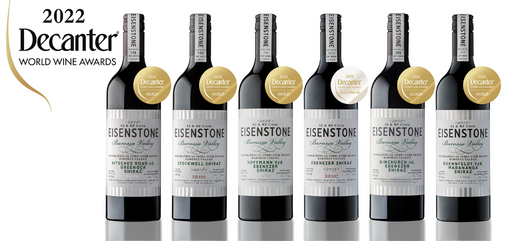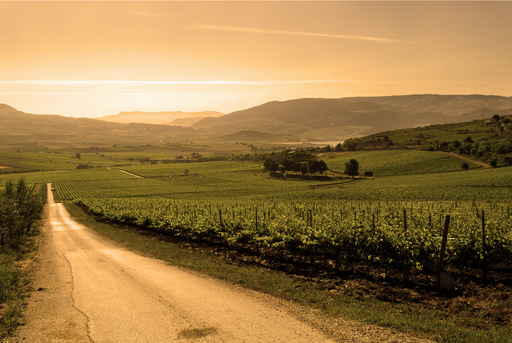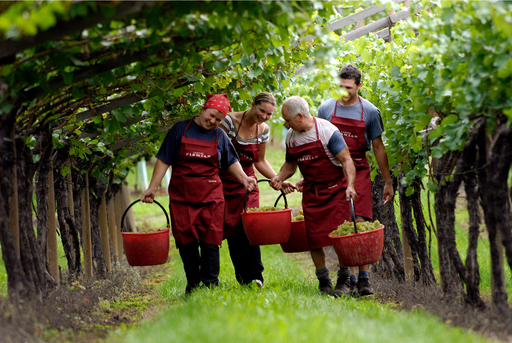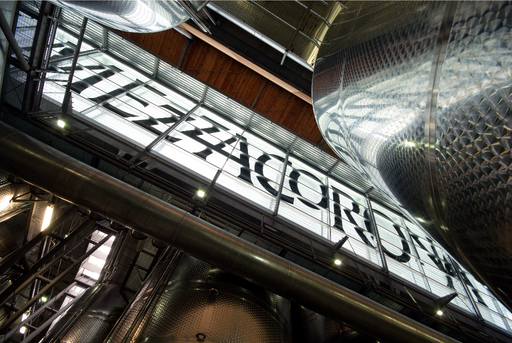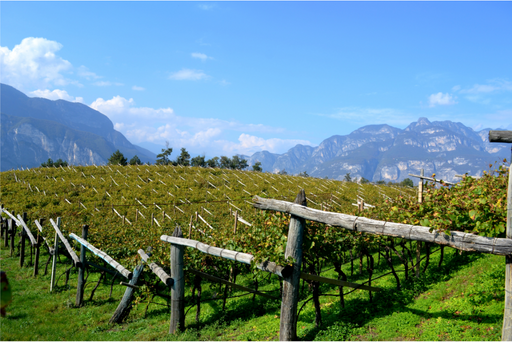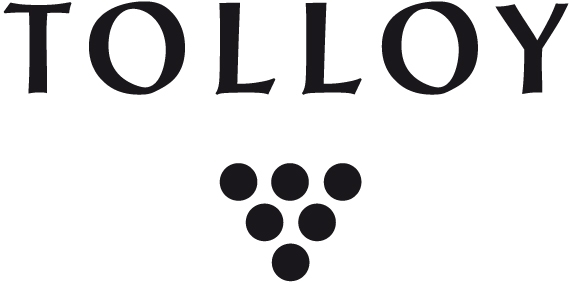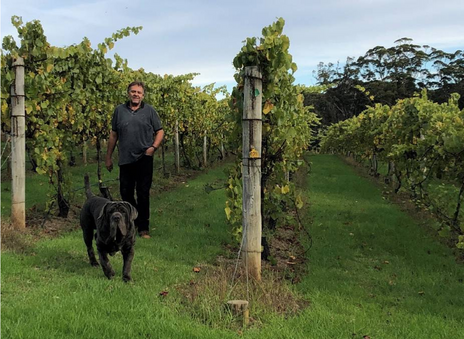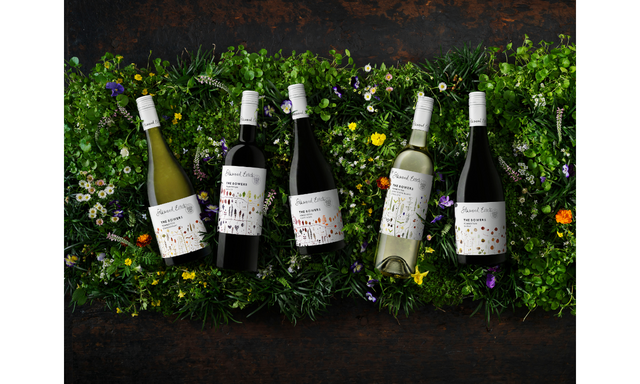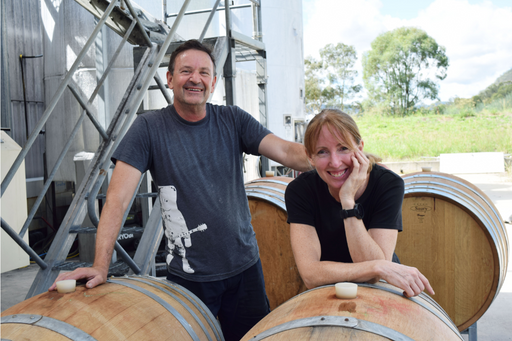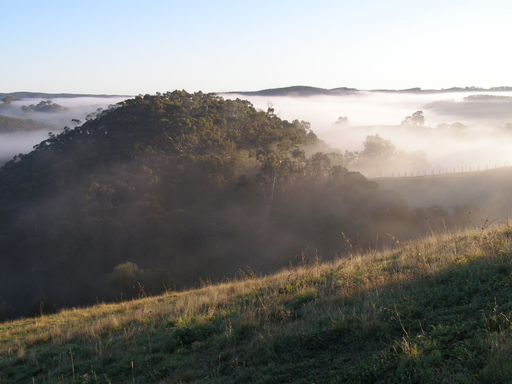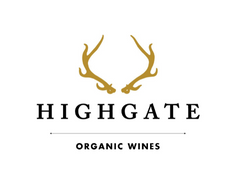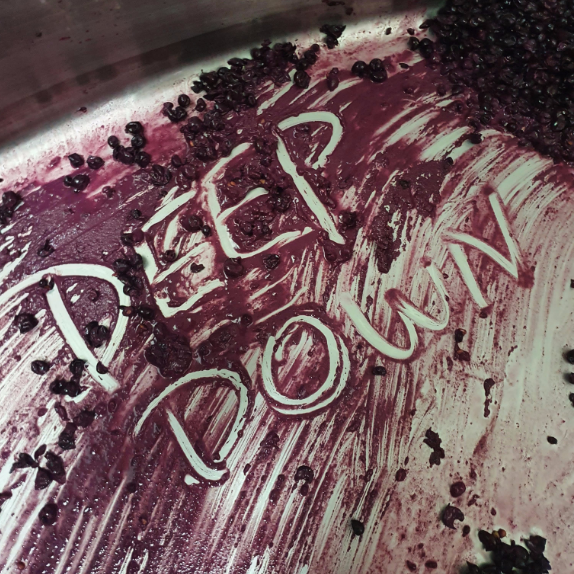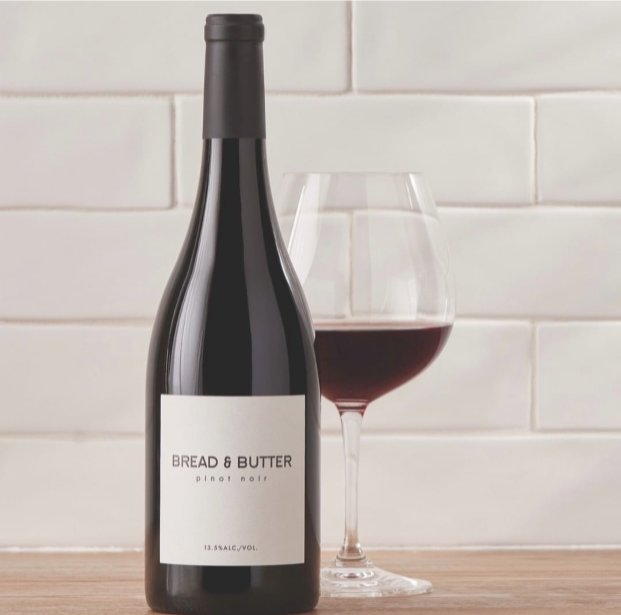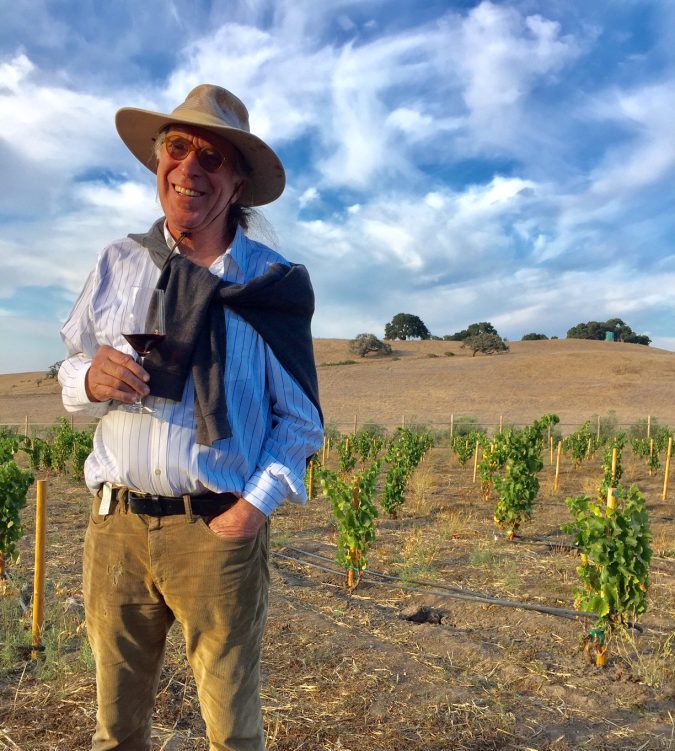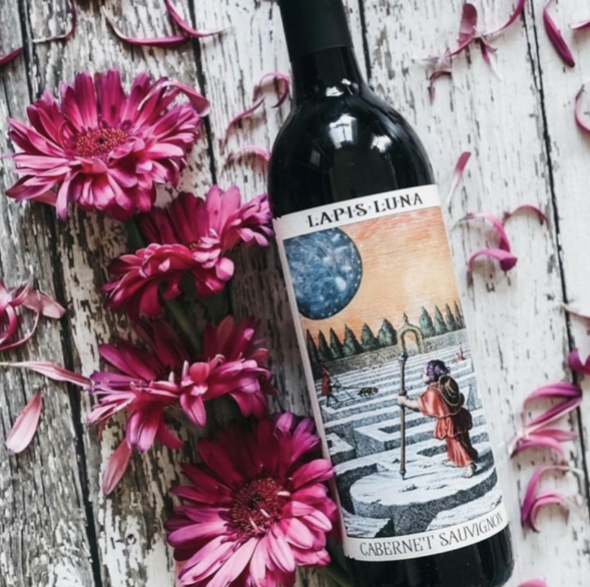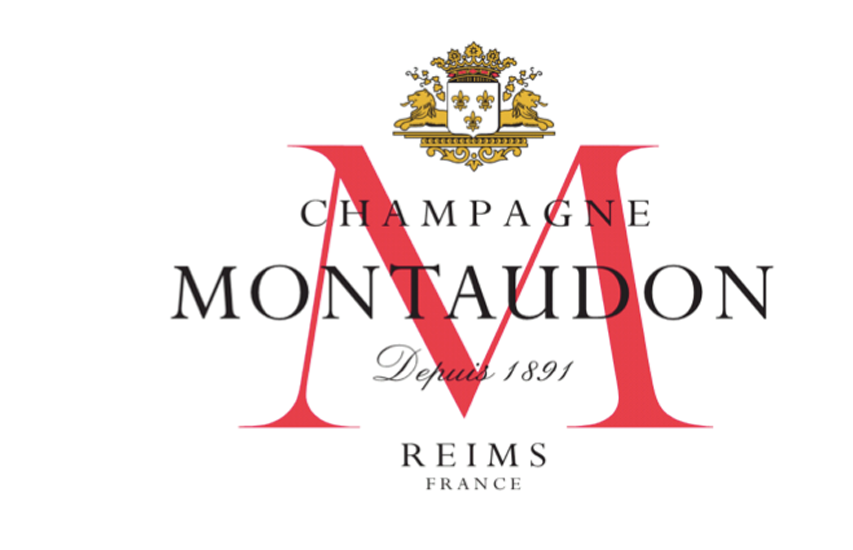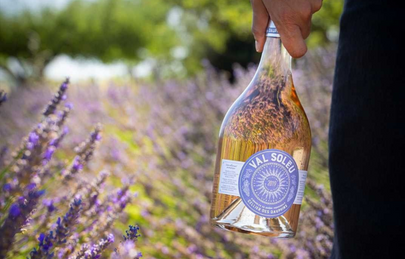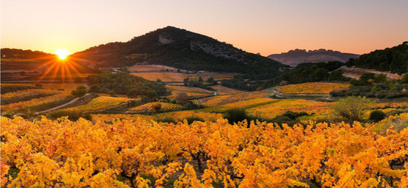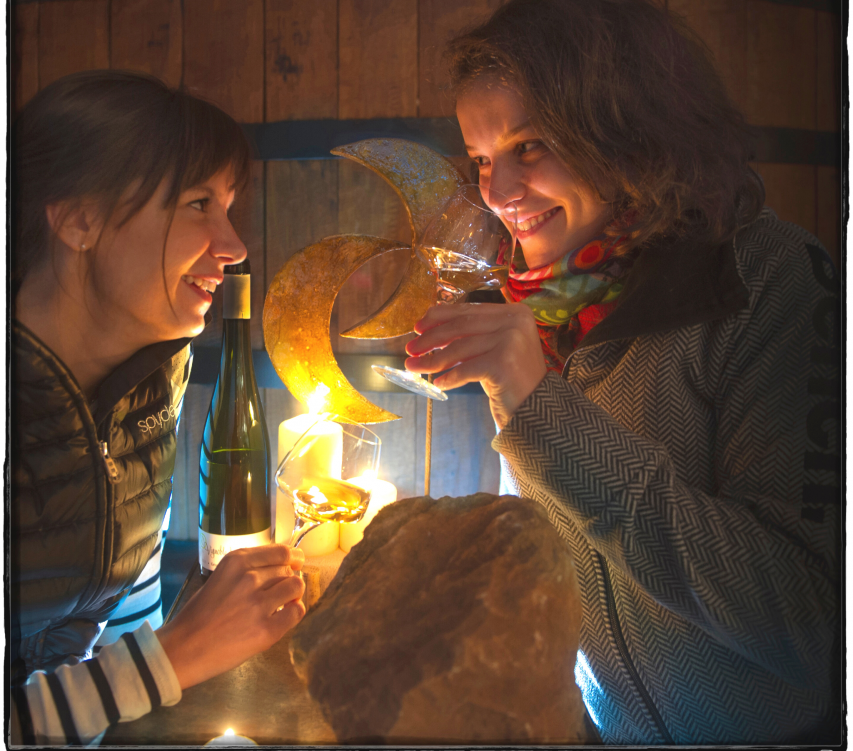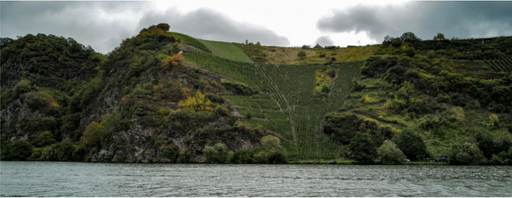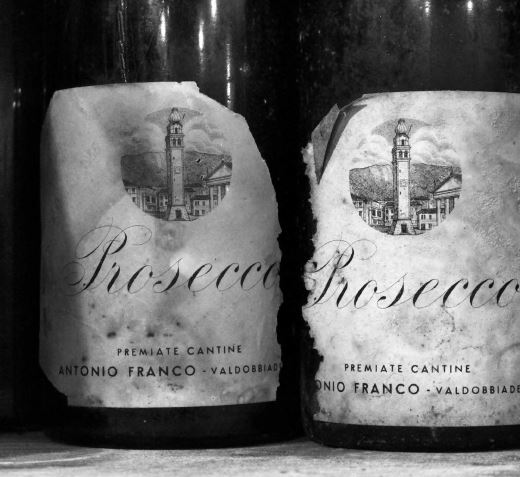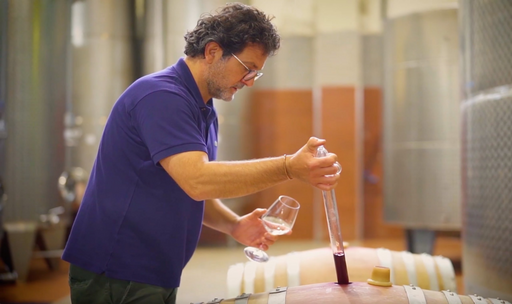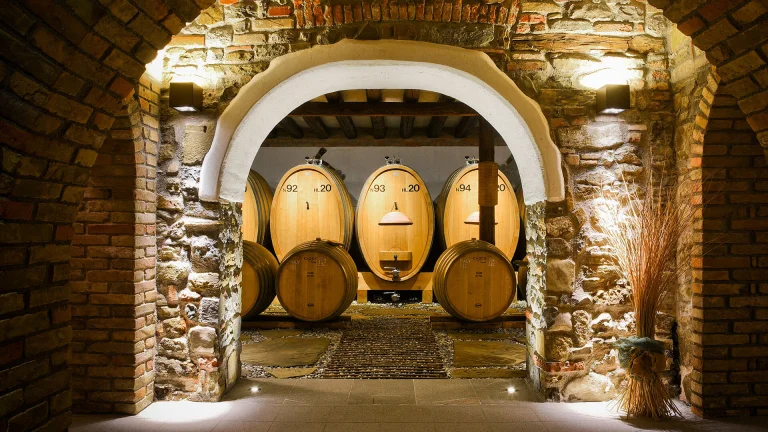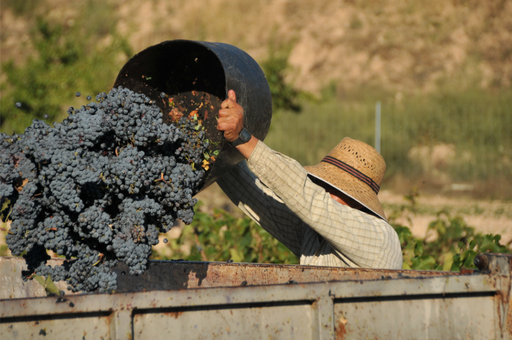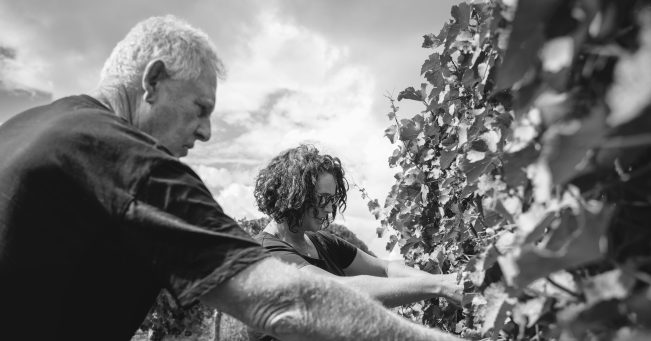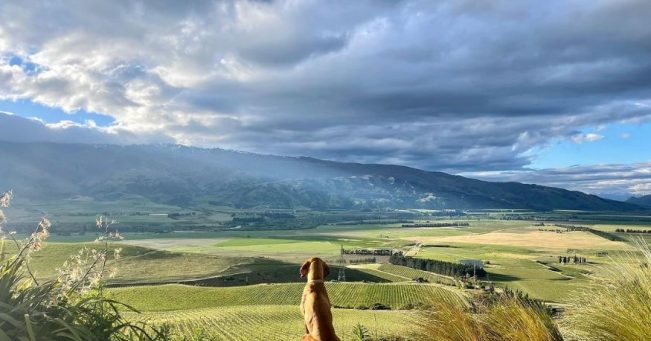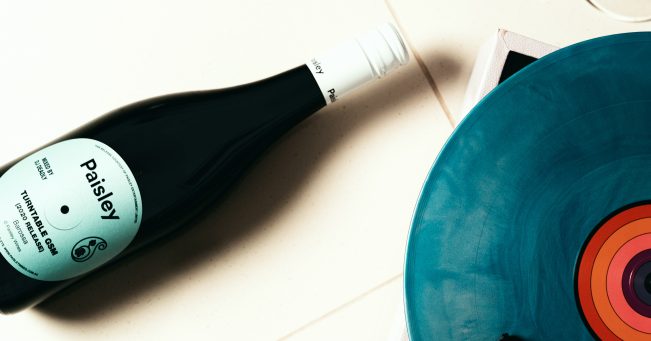This year, the most respected wine journalists in Australia and abroad tasted and reviewed our wines, leading to over 300 reviews and awards for 2022.
Feudo Arancio
2021 Feudo Arancio Grillo:
- 92 pts – Ken Gargett (Wine Pilot): Grillo is a variety that will not be familiar to many winelovers. This hardy Italian white thrives in Sicily where it handles the high temperatures with ease (perhaps it will be given a shot locally – there are actually around half a dozen local producers, though mostly in the cooler Adelaide Hills). It is used either in the making of Marsala or as a dry white wine, which on occasion is blended with Chardonnay. This one is all Grillo and rather exciting. Pale yellow, this is fresh and medium bodied at best. We have floral notes, notably frangipani blossoms, grapefruit pith, pears, orange rind notes and a minerally backing. Good intensity throughout, this is a wine that flows well, with focus. There is a seductive texture here and very good length. Drink now and up to the next five to six years. Lots to like in what would be a delicious wine with your next seafood feast.
- 90 pts – Patrick Eckel (Wine Reviewer): Lemon zest, dry honey and background notes of lime frame what is such an interesting nose. There is a saline and honeyed note to ripe lemon with a build of grapefruit like bitterness that aligns with the wines texture and flow. The finish is steeped in grapefruit with apple blossom and enough citrus fruits to provide contrast. A really interesting drink.
- Winsor Dobbin (Ciao Magazine): A delicious taste of Sicily that will not break the bank. Grillo is a local favourite grape that used to be used in the island’s fortified marsala wines. Nowadays it produces fresh, light, and refreshing white wines with tropical aromas and citrus and apple flavours to the fore. Feudo Arancio {the Orange Farm] is a respected and dependable producer that offers excellent value. It also produces an interesting white from another Sicilian grape variety: inzolia. This would be good with grilled prawns or salad dishes and is vegan friendly.
2021 Feudo Arancio Inzolia:
- 92 pts – Kim Brebach (BWU20): This wine sports a cork instead of a screwcap, suggesting a more serious wine. It worked on me, since I found it more complex, with more depth of flavour. Notes of citrus mingle with subdued ripe fruit flavours, with hints of saline and almonds. An intriguing wine.
- 92 pts – Patrick Eckel (Wine Reviewer): A punchy nose of worked peach and fig alongside brine and flint. The palate has a fullness of apricot and white peach with some gentle spice washing over the top. There is a faint bitterness to driving apricot fruit to finish that is both textural and gently savoury. A very enjoyable import with plenty going on.
- 91 pts – Ken Gargett (Wine Pilot): Another exciting Sicilian white. Again it was popular in past fortified wines, but these days we see it more and more as a fresh, crisp, dry table white. The wine undergoes a cool fermentation and then sits on its lees for four months to add texture and a hint of complexity. Pale lemon hue, the nose gives us spices and herbs but also lemon pith, florals and juicy Meyer lemon notes. There is a good texture here, soft and seductive, with excellent length and minerally acidity running the full distance. It lingers with persistence. Good drinking now and over the next four years. Another wine that would be magic with a plate of fine, fresh seafood.
2020 Feudo Arancio Rosato:
- 90 pts – Ken Gargett (Wine Pilot): Sicilian rosé, elegantly packaged, and under screwcap – ideal for these wines. This is a lovely pale burnished orange colour and fragrant with florals, especially rose petals, and raspberries plus fresh acidity. There is good intensity here and it is maintained throughout the journey before an appealing hint of bitter almond on a clean finish although the terrific nose is probably the highlight. Drink over the next year or two.
2020 Feudo Arancio Nero d’Avola:
- 93 pts – Kim Brebach (BWU20): As always, this winery in Sicily overdelivers: this is one of the best Neros I’ve seen in a while, leading with ripe, sweet fruit – black cherries and assorted red berries – and a touch of vanilla oak in the background. Medium-bodied, it packs a solid punch of flavour, good line and length, and pretty much perfect pitch. Great bistro/pizza/pasta red.
- 91 pts – Patrick Eckel (Wine Reviewer): A medium red in terms of colour with bright black cherry and plum that is ripe and earthen. The wine is medium to full bodied with a lovely flow of acidity and juicy primary fruit well offset by more structural and savoury tannins. The finish has gentle spice and weave of baking herbs to pure black cherry fruit. Great value import.
- 90 pts – Jeni Port (Wine Pilot): As Australian winemakers and drinkers are discovering, nero d’Avola is one versatile red grape variety. It’s something the Sicilians have long known, since nero d’Avola is one of its home-grown heroes. Expect to see more Sicilians like this champion all-rounder at an approachable price flying our way. The grape has a natural aptitude to please. Red cherry, black plum, with just a hint of sweet plum sauce, combine with anise and spice to fill the palate with flavour. Considering the price point, this is quite a feat, fulfilling the grape’s reputation on its home soil for producing a bold, sweet fruit intensity. It is offset with a light earthy, leathery savouriness – not too much but enough to act as a counter to the fruit and provide some brisk tannin support. Excellent drinking right now.
- 90 pts – Ken Gargett (Wine Pilot): Another cracking local Italian variety. This Sicilian winery never fails to impress, delivering flavour and value. Nero d’Avola is the leading red grape from Sicily and likely to continue to make inroads around the world thanks to climate change – it quite likes a bit of heat. Magenta in colour, we have florals, strawberries, raspberries, warm earth notes, dark berries, blackcurrants and leather. A real mix of ripe, lifted favours which appeal. Bright acidity then carries the wine to a lingering finish with slightly furry tannins. Attractive drinking now and for the next three to five years. Think about pairing it with mature cheeses.
2018 Feudo Arancio Riserva Rosso:
- 94 pts – Kim Brebach (BWU20): Made from Nero d’Avola, the main red variety of Sicily. Black cherries and prunes, along with earthy tones. Leather, black pepper and a hint of tobacco round out the picture. Nero can be simple but this wine shows off the variety. Perfect with the rustic food of southern Italy.
- 93 pts – Patrick Eckel (Wine Reviewer): Enjoyable aromatics of plum and black cherry that are floral, with a touch of boot leather. Rich, ripe and rounded palate with generous plum and raspberry fruits that are lifted by spice and milk chocolate. Lovely balance to finish with spiced plum lingering.
- 93 pts – Ken Gargett (Wine Pilot): This producer’s top red comes from a couple of varying vineyards (their estate vineyards at Ragusa and Agrigento), with the aim to provide contrast and complexity. Made from Nero d’Avola, 70% spends eight to ten months in French oak, with the remaining 30% aged in stainless steel, to help emphasise the fruit. Fermentation was for 10 to 12 days. After blending, the wine spends a short period in stainless steel and is then aged for another year in bottle before release. The wine is deep red/garnet in colour. The nose is immediately expressive with notes of cherries, warm earth, tobacco leaves, leather and hints of chocolate and plums. There is good complexity here with a supple, balanced palate and a line of good acidity running the length. The tannins are especially fine but there is certainly plenty of them. Nice balance throughout, this is impressive stuff and will drink well over the next decade.
- 92 pts – Aaron Brasher (The Real Review): Aromas of charred wood, wet earth, spice, cedar and blackcurrant. Full bodied, plenty of plum and mulberry teaming nicely with savoury, grippy, chalky tannins and shapely acidity. Lovely texture and length.
2015 Feudo Arancio Hekate Passito:
- 96 pts – Patrick Eckel (Wine Reviewer): Honeyed marmalade meets dried apricot and candied brazil nuts on the nose; there is an unctuousness to the palate with plenty of ripe apricot, fig and the faintest thread of ginger. There is great acidity to a wine that has so much residual sugar that ensures things remain fresh and flowing, there is apricot skin like textural contrast to finish with such mouth filling length.
- 93 pts – Huon Hooke (The Real Review): Deep golden-amber colour; viscous in the glass. Intense aromas of barley sugar, marmalade and toffee. Some botrytis infuence suspected. The wine is intense and clean throughout, well-made and while very sweet it’s well balanced and doesn’t cloy. Dried, mixed citrus peel flavours persist. There’s enough grip and acidity to cleanse the finish. Very good.
Castel Firmian
2018 Castel Firmian Riserva Teroldego Rotaliano:
- 94 pts – Kim Brebach (BWU20): Mezzacorona is a large co-op in Trentino-Adige at the foot of the Alps in northern Italy, which features individual wineries that belong to the co-op. Teroldego is a variety indigenous to this area. The name translates to ‘the little sour one.’ The impenetrable colour suggests a massive red, but it’s medium bodied. There are some sour cherries on the nose and on the palate, along with dark berries, black pepper and earthy notes. Intriguing wine that makes a pleasant change.
- 93 pts – Ken Gargett (Wine Pilot): Teroldego is hardly a household name in the world of wine, especially outside northern Italy, where it once seemed destined for oblivion. It was, fortunately, rescued mainly by the efforts of a single producer and now we have a number of the better local makers offering fine examples of this impressive variety from some of the most scenic vineyards on the planet. In DNA terms, it is considered to be the ‘uncle’ of Shiraz and has started to attract a little attention from Aussie producers. This is a very fine example for anyone keen to explore what this variety offers. Maroon hue, there is some serious concentration and power found here. We have flavours of black cherries, smoked meats, animal skins, blackcurrants and chocolate. A seductive if somewhat firm texture, through to powdery tannins which provide some serious grip. Young now, and while it is enjoyable, expect it to develop more over the next eight years.
- 92 pts – Patrick Eckel (Wine Reviewer): A vibrant deep red in colour with red cherry,a touch of bramble and richer milk chocolate notes. There is a grainy, earthen baseline of tannins alongside ripe plum and oak that washes across with some enjoyable florals. Excellent lines of acidity with good length and complexity.
2021 Castel Firmian Lagrein:
- 92 pts – Kim Brebach (BWU20): Trentino Alto Adige is the home of this grape, which people tend to either love or dislike. The colour is impenetrable, the nose offers a riot of smells ranging from cherries and dark berries to leather and dried herbs. The palate continues the story and adds some vanillan oak, fresh acid and ripe tannins. It packs a lot of flavour into a medium-bodied package that really needs a couple more years in a dark place.
- 91 pts – Ken Gargett (Wine Pilot): Lagrein is a variety native to northern Italy and best known for producing wines which are both high in acidity and in tannins, but offering appealing plums, darker fruits and earthy tones. Slightly old-fashioned (in a nice way), they can be full, without being clumsy. This example is deep magenta in colour. We have notes of chocolate, soy, bay leaves and cassis, as well as hints of charcuterie and that bitter almond/sour cherry note on the finish of the palate, tying the wine together with saturated flavours, impressive length, fine but noticeable tannins and bright acidity. This is appealing now but should age well for six to eight years and one can expect the ranking to go higher over that time.
2019 Castel Firmian Pinot Nero:
- 92 pts – Patrick Eckel (Wine Reviewer): A light red with aromatics of morello cherry and faint earth. Light to medium bodied with pure red cherry and cranberry fruit, tannins are firm but superfine and give a softly bitter contrast, lovely lines of acidity and vibrant red fruits to finish. A great example of the variety.
- 92 pts – Ken Gargett (Wine Pilot): Pinot Noir is known as Pinot Nero in Italy and while it might not be the first variety one thinks of when looking for Italian wines, it is certainly making a mark, especially from cooler regions such as Trentino. An attractive crimson red, we have notes of dry herbs, animal skins, leather, red fruits like cherries and raspberries plus a sour cherry note on the finish. Quite spicy, there is the merest hint of oak. Supple palate, good balance, fine acidity, impressive length and an appealing texture all contribute to making this an exciting example of the grape and definitely one worth exploring for the Pinotphiles among us. Very much savoury in style, it should age and improve for at least five to six years with lots to like here.
- 91 pts – Kim Brebach (BWU20): Fine-boned Pinot Noir offering delicate red berries in a fresh package, Fine line of acid with good length and clean finish.
2021 Castel Firmian Pinot Grigio:
- 91 pts – Decanter World Wine Awards: Floral, toast and spicy nose. The palate is tight and citrusy with juicy acidity, a mineral edge and a long, refreshing finish. Pretty impressive.
- 91 pts – Ken Gargett (Wine Pilot): There are plenty of good Pinot Grigios made locally, so why venture so far? Well, perhaps the question should be, why not go with the original version when you can? Castel Firmian is the selection of the top wines from the respected Italian cooperative, Mezzacorona. The grapes for this wine come from the Adige Valley at the foothills of the Dolomites. There is brief skin contact to increase complexity. Lemon/straw in colour, the aromas weave through spice notes, pears, citrus, minerals and a hint of orange rind. The palate is pleasingly soft with a line of acidity running the length. The wine is mid-length but the intensity never flags with good balance. Terrific drinking over the next 2-3 years so if you want to see what an original looks like, this is your chance.
- 91 pts – Gabrielle Poy (The Real Review): Notes of spiced honey, wet stones and green pears make way for an energetic and nervy core of fruit. A fine line of acidity pulsates through, injecting vibrancy into the wine.
- 90 pts – Kim Brebach (BWU20): Ripe pears and apples, nectarines and a squeeze of lemon, mouth-filling, pleasant, simple wine.
- 90 pts – Patrick Eckel (Wine Reviewer):There are plenty of citrus fruits on the nose that are backed by richer stone fruits and new season pear. The wine has good flow with citrus laced acidity working well with fresh pear. The finish sees a gentle fruit derived spice and citrus with enough textural influence to keep you coming back for another glass.
Mezzacorona:
Mezza di Mezzacorona Sparkling:
- 91 pts – Kim Brebach (BWU20): They call the Mezza a glacial sparkling wine thanks to its home in the cool Italian Alps. It’s a unique blend of Chardonnay, Pinot Blanc and Muller Thurgau, and is made in a similar way to Prosecco creating a bright, fresh and juicy sparkling wine. This wine is unique and elegant with its chalky, baked apple and citrus fruits plus a faint floral edge. It’s then dry, crisp and light weight with gentle earthy flavours finishing fine and long.
- 90 pts – Kim Brebach (BWU20): They call the Mezza a glacial sparkling wine thanks to its home in the cool Italian Alps. It’s a unique blend of Chardonnay, Pinot Blanc and Muller Thurgau, and is made in a similar way to Prosecco creating a bright, fresh and juicy sparkling wine. This wine is unique and elegant with its chalky, baked apple and citrus fruits plus a faint floral edge. It’s then dry, crisp and light weight with gentle earthy flavours finishing fine and long.
- 90 pts – Ken Gargett (Wine Pilot): Anyone who has spent time in the Dolomites in Italy will know just how chilly it can get and this delightful sparkler, with its nifty name, evokes just that. From a rarely seen combination of varieties – Chardonnay (60%), Pinot Bianco (30%) and Müller Thurgau (10%) – the vineyards are high altitude, between 400 and 800 metres. Reminiscent of a fine Prosecco in many ways, no doubt as it is also produced by the Charmat method. After destemming, crushing and a soft pressing, fermentation is for ten to eleven days at low temperatures, followed by the best part of half a year maturing on lees. The wine is lemon yellow in colour with notes of peaches and other stonefruits, citrus and crisp apples. Florals and even a hint of the tropicals. A fine minerally background. The exuberant fruit bursts forth, along a soft and supple palate with decent length, through to a lifted finish.
Mezza di Mezzacorona Sparkling Rose:
- 90 pts – Kim Brebach (BWU20): I can see this going down a treat at Italian weddings. Crisp, cool and dry, from Alto Adige in the beautiful Dolomites, restrained and elegant, not too alcoholic either.
2021 Mezzacorona Pinot Grigio:
- 91 pts – Kim Brebach (BWU20): This wine is bursting with so much energy that it almost leaps out of the glass. Crisp apples, green pears and a hint of almond (again) do the running for this refreshing wine, and the price makes it a real bargain.
2021 Maso di Mezzo Pinot Grigio:
- 92 pts – Kim Brebach (BWU20): From the Dolomite mountains in northern Italy. Delicious fruit salad wine, with flavours ranging from pears and red apples to stone fruits. The acid on the finish keeps it tidy, along with some chalky minerals.
2020 Maso di Mezzo Rose:
- 92 pts – Kim Brebach (BWU20): Making a Rose from Pinot Gris logical since this variety naturally produces a pink tinge in its wines. The vineyards at the foot of the Dolomites make elegant whites, this one leading with pears and strawberries backed by tangy citrus and hints of ginger. Perfect drinking on a summer’s day.
- 90 pts – Angus Hughson (Wine Pilot): The Italians have made an art form out of making delicious rosés from Pinot Gris or Pinot Grigio. Wines with a delicate peachy pink colour that are gently fragrant with fine acidity which are a delicious alternative to the standard rosé style. Drawn from vineyards near the Dolomites in Northern Italy, this wine has beautifully elegant fruits, predominantly white strawberry and pear before launching into a tangy palate with more chalky and citrus flavours plus a spicy lift. Refreshment value is high with a lingering finish to top it all off.
- 90 pts – Ken Gargett (Wine Pilot): Our next contestant in the delicious Rosé stakes is from Italy, more specifically the Dolomites, and it may surprise. Made from Pinot Grigio, many would assume that the wine will be the traditional white, as almost every Pinot Grigio/Gris we see is. In fact, if given any time on skins, Pinot Gris/Grigio will pick up a pink hue, which is exactly what has happened here. The colour is actually the palest of gold bronzes. The style is a touch more rustic than some with aromas of stewed pears, pink grapefruits and undergrowth. There is also a pleasing minerally note backing up along the length of the wine. Well balanced and with decent length, this is definitely one worth checking out.
Rotari
Rotari Brut:
- 92 pts – Ultimate Wine Challenge: Bring lemon yellow color. Vibrant, egg shell colored mousse is persistent. First inhalations detect bread dough, biscuit batter, dry stone. Taste profile features a toasty, fizzy, chardonnay thumbprint of tart green apple, gooseberry, pear flavors that last long and firmly into the dry aftertaste.
- 92 pts – Kim Brebach (BWU20): Spumante style made from Chardonnay grapes grown in the hills of Faedo and Pressano, near the River Adige in the middle of the Dolomite mountains. Method Champenois, 3 years on lees in the bottle. It’s quite a complex brew, with notes of citrus, pears, dried honey, apples and almonds, bready yeast and chalky minerals.
- 92 pts – Huon Hooke (The Real Review): Bright medium-light yellow colour; in good condition at its age. Floral and lightly toasty bouquet, palate dry and savoury with good length and amplitude. There is some good aged character here as well as vitality.
- 91 pts – Patrick Eckel (Wine Reviewer): A light to golden yellow in colour with lemon zest alongside ripe green apple on the nose. The bead is fine with a mineral backbone of acidity that gives a tautness of lemon and grapefruit with a contrasting stone fruit influence. Well made and well worth the price.
- 91 pts – Stuart Knox (The Real Review): Bright straw yellow with green apple and baked goods on the nose. Finely beaded across the tongue with rich golden fruits and sweet creamy pasty notes. Great length and persistence that finishes with enough brightness to refresh the palate.
- Gold + Best Trento DOC SParkling Wine – Mundus Vini
- Gold – Berliner Wein Trophy
Rotari Rose:
- 95 pts – Angus Hughson (Drinks Trade Magazine): Pale pink – solid, fresh, long, solid line. Lots of fun there, power length. Very good.
- 95 pts – Charlie Simpson (Drinks Trade Magazine): Great colour, pink with sweet fruit nose, oak complexity, delicate bitterness carries flavour long.
- 93 pts – Angus Hughson (Wine Pilot): From up in the hills of Trentino in the heart of the Dolomites comes this delicious, classically styled Sparkling Rose with more than a little in common with vintage Champagne. It is a blend of Pinot Noir and Chardonnay with the wine spending two years on its lees to gain layers of delicious French pastry complexity. It has got a pale copper colour and beautiful mix of raspberry and rose aromas well balanced with savoury yeasty complexity. It is dry, fresh, fine and detailed – crisp with great finesse and then a fine, long finish. Cracking wine and exceptional value for vintage European sparkling.
- 93 pts – Kim Brebach (BWU20): 75% Pinot Noir and 25% Chardonnay. More complexity here than the white Rotari. Serves up some cool raspberries and cherries, along with some warm bread; a savoury line of marzipan adds a nice touch. Good length and dry, clean finish.
- 92 pts – National Liquor News
- 90 pts – Huon Hooke (The Real Review): Pale salmon-pink colour; attractive nose of raspberry shortbread, toast and quince paste. Appealing richness and depth of flavour which accurately tracks the bouquet and fills the mouth with fleshy richness that lingers well. Clean dry finish. Lovely balance for immediate drinking.
- Gold – 2020 Champagne & Sparkling World Championship
2013 Rotari Flavio Riserva:
- 93 pts – Huon Hooke (The Real Review): Youthful bright mid-yellow colour with a vigorous mousse, the bouquet showing good primary characters of stone fruits and flowers, as well as bread crust and croissant secondary aromas, and tinges of pastry-shop. It’s rich and full in the mouth, with concentration and amplitude, the finish dry but not austere, rolling long through the finish.
Mottura:
2020 Mottura Primitivo del Salento:
- 92 pts – Ken Gargett (Wine Pilot): From the Puglian region, most of us are more familiar with this grape under the name of Zinfandel. Zin comes in a great many guises – simply buying a bottle because of the name on the label might just be a way of inviting disappointment into your life, but a good one is a thoroughly enjoyable wine. The problem is that they vary from light rose to whopping blockbusters and everything in between. This one is dark garnet in colour and quite richly flavoured. We have herbs, dark berries, leather, dark cherries and roast meat notes. The cherries soon start to dominate through the palate and on to the finish. There are bright and fresh flavours, an attractive savouriness with fine tannins plus persistence and fine acidity. I like this. It has a good ten years ahead of it and is a fine example of a good Primitivo/Zin.
- 90 pts – xtraWine
- 4.5 Stars – John Lewis (Newcastle Herald): From the Salento Region on the “heel of the boot of Italy”, this multi-faceted red comes from a grape variety carrying multiple names. It’s best known as zinfandel in Australia and California and is believed to have originated under the name plavac veliki in the Dalmatia area of Croatia and it is also dubbed tribidrag. Called primitivo in Italy and other European wine areas, this one comes from the Mottura family wine company founded in 1927. It’s been run by four generations of the family and has a 4000-tonne capacity winery and 250 hectares of vines up to 60 years old in the province of Lecce in southern Italy. The wine registers 13% alcohol, shines purple-tinged crimson in the glass and has potpourri scents. The front palate delivers vibrant blackcurrant flavour and the middle palate has Maraschino cherry, spice, herb and savoury oak elements. The finish brings forth chalky tannins and it will go well with roast pork loin with prune stuffing and cellar for seven years.
Tolloy
2021 Tolloy Pinot Grigio:
- 95 pts – Kim Brebach (BWU20): The wine is made from grapes grown in Trentino / Alto Adige, which was part of Austria before the end of WWII, known as Südtirol (which is mentioned on the label). This is the most impressive Pinot Grigio I’ve tasted in the last year or two, It offers the classic pears and apples, along with citrus notes, backed by the finest acidity. The seamless integration and extraordinary finesse keep you coming back for more.
- 92 pts – Ken Gargett (Wine Pilot): Another very fine Pinot Grigio from the Sud Tirol region – Trentino/Alto Adige – this is deep lemon in colour, with aromas including green apples, spices, a hint of nectarines and citrus. Fresh, balanced and focused, there is good intensity throughout and lovely lemon notes on the palate. Soft and supple with a fine line of acidity, right through to the persistent finish. Delicious now but no reason it could not be given more time over the next four to five years, during which it should add a touch more complexity and texture. A really good example of Italian Pinot Grigio.
- 92 pts – Gabreille Poy (The Real Review): Notes of brioche mix with wet rocks, fennel and pears. It draws you in. The palate is long and fine with a pleasing pithy phenolic finish and a minerally streak which adds texture. There’s a pulse and nervous energy to this wine that draws you back for more.
- 91 pts – Patrick Eckel (Wine Reviewer): There are top notes of meyer lemon to spiced stone fruits and custard apple on the nose; the wine focuses more on structure than it does exuberant fruit with a gentle build of concentration and texture that is accentuated by enjoyable lines of mineral acidity. Brown pear is lifted by citrus zest to finish, with the wine to drink well now and over the next two years.
Eisenstone Wines
2020 Eisenstone Hoffmann Vineyard Shiraz SV902:
- 99 pts – Huon Hooke (The Real Review): Very deep dark and bright purple-red colour with a mesmeric bouquet of lifted red and blue fruits, dark chocolate and vanilla, dried herbs and a flash of ironstone. At the heart of the wine is a geneorus dollop of sweet blackberry fruit and the tannins though ample are well balanced by the flavour. An amazing wine: great character, already tremendously detailed and promising to develop into a great wine of super-special complexity and distinction.
- 93 pts – Angus Hughson (Wine Pilot): Made from 80 year old vines on the Hoffman Vineyard this is the most complete of all the Eisenstone wines from 2020. It starts with an impressive and powerful core of fruit – blackberry, chocolate and licorice aromas delivered with panache and confidence well matched to fine-grained oak. It then holds a compact shape, all tightly wound and reserved, with a rich bed of fine but firm tannins supporting a long, strong and unevolved finish. This has plenty in the tank and demands cellaring to show its best.
2020 Eisenstone McDonald Vineyard Shiraz SV904:
- 97 pts – Huon Hooke (The Real Review): Deep, dark and very bright purple-red colour, with a lovely detailed aroma of chocolate and herbs, both fresh and dried; floral nuances and red fruits, hints of spices and the palate is very full-bodied and generous with lashings of supple tannins, all in harmony with the great depth of fruit. A complex wine already: it will be great to see it a few years down the track.
- 92 pts – Angus Hughson (Wine Pilot): This wine is made from a vineyard selection taken from the famed Roennfeldt Road known for its particularly decadent and dense style of Barossan Shiraz. And it delivers with luscious fruit pastille, blueberry and licorice wrapped up beautifully in a gentle blanket of French oak, 50% of which is new. A rich vein of drying tannins provide strong support to the fruit and a sustained finish with a little softness suggesting this is a strong proposition over the medium rather than longer term.
2019 Eisenstone Ebenezer Shiraz SR802:
- 97 pts – 2022 Decanter World Wine Awards: Luscious milky espresso with cocoa, mocha, and dark chocolate. A hedonistic wine with plenty of dense, dark, black and blueberry fruits with hints of raisins. The power-packed palate shows a sweet core surrounded by firm tannins and a lovely molasses richness.
2020 Eisenstone Ebenezer Shiraz SR802:
- 96 pts – Huon Hooke (The Real Review): Deep dark red-purple colour with a sweet blackberry aroma, traces of dark-chocolate and vanilla, the palate concentrated and fleshy, deep and plush with a big core of fruit sweetness and then alcohol warmth and lashings of supple tannins to conclude. Chocolate again lingers. Superb wine.
- 91 pts – Angus Hughson (Wine Pilot): Made with fruit from the famed Hoffman Vineyard and aged in 50% new Burgundian Oak for 18 months, this is quite a luscious Barossan expression which is what you’d expect from Ebenezer although in a slightly softer and earlier drinking frame than expected. There are beautifully vibrant fruits of the forest, red cherry, dark cherry, and fruit pastille aromas with fine oak very well integrated, which is a hallmark of the Eisenstone style. It’s then powerful and supple, which makes for a seductive package, with juicy acidity and fine tannins in good support of red earth, dried spices and chocolatey flavours before finishing long and silky. Get ready to be seduced.
2019 Eisenstone Roennfeldt Vineyard Shiraz SV904:
- 96 pts – 2022 Decanter World Wine Awards: A beautiful nose of intense liquid blackberry-deep and alluring. The body has sweet succulent fruit, chocolatey flavours and fine, but definitely present tannins. A complex wine of high quality.
2020 Eisenstone Marananga Shiraz SR804:
- 95 pts – Huon Hooke (The Real Review): Deep, dense colour with blackberry and smoky char-oak aromas, a touch of tar and ironstone, the palate full-bodied and rich, deep, dense and concentrated, the tannins supple and fleshy-smooth. Delicious wine.
2019 Eisenstone Hofmann Vineyard Shiraz SV902:
- 95 pts – 2022 Decanter World Wine Awards: Just a mention of the Hoffman vineyard in Ebenezer is enough to make many Barossa fans get a little excited. Fruit from this vineyard is taken by Rockford and Chris Ringland to name a few so it is very highly regarded. Compared to the SR802 Ebenezer Shiraz from the same vintage this wine has much more to it in fruit complexity, structure and power and needs a little time to come around. Great colour and there is a real Basket Press kind of vibe here with its savoury fruit style thanks to spicy, baked earth and oak aromas sitting over ripe blackberry fruit. It then comes together beautifully on the palate with excellent concentration of sweet fruit but still retains its savoury feel thanks to red earthy tones. Fruit is long, pure and balanced providing superb drinkability over the next decade and more.
2020 Eisenstone Koonunga Shiraz SR807:
- 94 pts – Huon Hooke (The Real Review): Deep, dark colour with a savoury bouquet of dried herbs and dried grass, forest-floor and earthy terrestrial notes, the palate very drying and tannic, the tannins slightly outgunning the fruit at this juncture. Very dark chocolate rules. A serious wine that cries out for a slab of hard, aged cheese.
- 92 pts – Angus Hughson (Wine Pilot): Now we are getting serious as we dive deep near the Barossa’s northern boundary and it is great to see Koonunga celebrated as a source of high quality Barossan fruit. A deep colour is followed by impressive fruit drive and density as this wine ripples with blackberry, mulberry and baked earth aromas with a nice touch of dried spices. The palate is then beautifully composed, with power and surprising finesse. There is also a strong inner heart and strength that will see it sing for at least a decade.
2020 Eisenstone Gomersal Shiraz SR808:
- 93 pts – Huon Hooke (The Real Review): Deep, dense red-purple with black-ish tinges, the bouquet sweetly spicy, fresh-tilled earth and a trace of tar, the palate elegantly formed and soft tannined, a lighter wine by the maker’s standards, but still full-bodied and has a touch of richness. It already drinks very well.
- 90 pts – Angus Hughson (Wine Pilot): From the western edge of the Barossa at Gomersal comes this delicious 2020 Shiraz that impresses with lashings of dark chocolatey aromas topped with mulberry and blackberry plus touches of cinnamon and nutmeg. Again quite seductive and well rounded, it is bursting with blackberry and blueberry flavours before softening out to an ample, fleshy finish. A great crowd pleaser to enjoy over the medium term.
Harewood Estate
2022 Harewood Mt Barker Riesling:
- 96 pts – Ken Gargett (Wine Pilot): Another from the Harewood Riesling collection which steps up on last year’s superb offering. This is seriously good by any standards. As is usual, we are talking about a wine from a single vineyard in the Mt Barker region, made from free run juice with a long, cool ferment in stainless steel. The colour is a very pale watery lemon. The fragrances delicate, almost ethereal – spices, florals, citrus, with a note of river stones. This is balanced and focused, a Riesling of poise, which dances across the palate, and yet there is no lack of power. Finely crafted with excellent length, this really is just exquisite. Drink now or cellar for six to ten years.
- 93 pts – Kim Brebach (BWU20): I look forward to tasting these Rieslings made by James Kellie in the Great Southern of Western Australia. They’re different from the South Australians., more fine-boned and delicate, floral notes, cool stone fruits and hints of grapefruit, long and elegant, with a chalky texture. Very young; the superb length and balance will see it improve for years.
- 90 pts – Angus Hughson (Wine Pilot): From a vineyard 50 kilometres inland from the coast comes this wine that ticks all the boxes with both poise and generosity of flavour. Pale in colour, there is a delicious array of fruits including pear, melon and blossom with a nice touch of chalk and spice. It’s then quite textural with a slightly more exotic feel than expected, finely balanced acidity providing backbone to a lingering and refined finish. A super early drinking style although will drink well for some time to come.
2022 Harewood Tunney Riesling:
- 95 pts – Kim Brebach (BWU20): James Kellie makes about 5 single vineyard Rieslings, and they’re all good. I like the Tunney best since it is richer than the others, yet retains the same finesse. The vineyard is near Frankland River. The wine offers spring flowers, Meyer lemons, limes and ripe apples, and glides across the tongue with great line and length.
- 94 pts – Ken Gargett (Wine Pilot): The annual collection of West Aussie Rieslings from Harewood always throws up some special wines. And great value drinking. For the Tunney, the grapes come from a single vineyard near the eponymous town which is some 40 kilometres north-east of Frankland River. It is the most northerly of all vineyards in the Great Southern region. Free run juice undergoes a cool ferment in stainless steel tanks. This wine makes a good comparison with the 2021 version, though my preference is for this ‘22, marginally. A very pale lime green colour. This is clean and fresh and with an intense ‘Riesling’ nose. The immediate character is limes and lemons with a little touch of the stonefruits, with a chalky background. There are notes of spices, bath salts and lavender. Slightly edgy in style, this is a gently lingering example of good Riesling, which can be enjoyed now for the freshness and crisp acidity, or put away for 8 to 10 years to mature. A refreshing and classy wine.
- Winsor Dobbin (Ciao Magazine): James Kellie and his team at Harewood Estate in Western Australia produce a range of excellent rieslings from different regions including Frankland River, Mount Barker, Porongurup, and Denmark. This one was my favourite of the 2022 releases; and it paired a treat with some whiting fillets. Tunney is the most northerly vineyard in the Great Southern. Impressively linear, this has pear and citrus flavours to the fore, great purity, and some lively acidity on the palate. Pair with Korean or Vietnamese dishes. Distributed by Single Vineyard Sellers.
2022 Harewood Porongurup Riesling:
- 95 pts – Ken Gargett (Wine Pilot): The Porongurup sub-region of the Great Southern in Western Australia is a well-known Riesling hotspot and one which has enjoyed some really superb vintages of late – 2022 is no exception. Pale lemon in colour, we have intense aromas of florals, lavender, talc/bath salts and limes, all with a chalky, minerally background. Coiled power is evident, right through to the persistent finish. A fine line of vibrant acidity runs the length. This is built for a very long life, if you prefer your Rieslings with age. Ten to fifteen years should be a doddle.
- 92 pts – Angus Hughson (Wine Pilot): My favourite of James Kellie’s Rieslings from 2022 with killer purity and every part in its perfect place. It is beautifully pale in colour before launching into focussed pear, floral, citrus and chalky aromas that display both power and delicacy. A mineral-infused flavour spectrum follows, finely detailed and driven to a lengthy finish by silky, refreshing acidity. Great value and worth putting some down for five to ten years to enjoy its evolution.
2022 Harewood Great Southern Riesling:
- 93 pts – Ken Gargett (Wine Pilot): We’ve looked at a number of the Harewood Rieslings, including several from this vintage, and they never miss a beat. A pale yellow/green in colour, there are lovely lemon aromas here. A hint of lavender among the florals. This is exhibiting a slightly riper, more tropical, fuller style than some of the lean, minerally Rieslings we see, but still has a lovely line of acidity and good focus. Still crisp with some attractive citrus notes, this will drink well over the next six to seven years, lnger if aged Riesling is the style that you prefer. A fine wine for matching with quality seafood. You like Riesling? Then Harewood should be on your radar.
- 93 pts – Kim Brebach (BWU20): I can’t yet find a source for this wine, the most approachable of the range of single vineyard Rieslings. Rich and ripe Meyer lemons with a hint of cream and a touch of chalk.
- 91 pts – Andrew Graham (Oz Wine Review): This is the entry-level Riesling from Great Southern Rizza heroes Harewood Estate and it lobs up with a shedload of drinking pleasure for just $20. The Harewood Estate Great Southern Riesling 2022 has green melon and grapefruit, the style open, ripe, generous and open yet still crisp to finish. Slightly ill-defined, but that green banana citrus fruit is so easily attractive with acidity that is soft yet still fresh enough. Goldilocks balance at this price.
2020 Harewood Shiraz Cabernet:
- 93 pts – Ken Gargett (Wine Pilot): Proving that the team at Harewood can do just as well with reds as their famed whites, this classic Aussie blend of Shiraz and Cabernet from the Great Southern region is a cracker. The Shiraz hails from Frankland River and the Cabernet from Porongurup. Individual parcels underwent fermentation in small open fermenters before spending 18 months in French oak barriques to mature. Fining is with egg whites. A deep crimson in colour, this is a beautifully elegant style of red, yet certainly not lacking flavour, intensity or underlying power. Restrained, poised and balanced, we have notes of leather, animal hides, chocolate, blackberries, tobacco leaves, a tiny touch of raspberries and dry herbs. A hint of a vanillin note from the French oak is evident. The wine is beautifully focused, the texture supple, the tannins silky and the finish long. More elegant than is traditional with this blend, but then this isn’t the Barossa and the wine is a very impressive one.
- 93 pts – Kim Brebach (BWU20): Frankland River Shiraz and and Porongurup Cabernet make a great pairing here., offering ripe sweet fruit from dark berries, touched up with vanilla from French oak, and infused with some dried herbs. Medium bodied, quite elegant, smooth texture and a long cool finish. A hint of a vanillin note from the French oak is evident. The wine is beautifully focused, the texture supple, the tannins silky and the finish long.
2022 Harewood Denmark Riesling:
- 93 pts – Ken Gargett (Wine Pilot): Free run juice which enjoys a long, cool fermentation in stainless steel with minimal filtration prior to bottling provides yet another scintillating Riesling from the Great Southern sub-region of Denmark. The wine, a very dilute pale straw in colour, does exhibit hints of that sea breeze, oyster shell note which sometimes appears here, but it is the support from the grapefruit pith notes with the chalk, limes, spices and talc that dominates. A minerally backing and a touch of a bitter almond note tying up the finish too. Fine acidity, impeccable balance, and with a finish that lingers beautifully, this wine will provide pleasure any time over the next dozen years.
- 92 pts – Kim Brebach (BWU20): Denmark is well-known for its delicate whites; this one comes with a whiff of brine from the Southern ocean. There are faint limes and some grapefruit tang, along with notes of talc and chalk – Dresden China in a glass.
2020 Apricus Hill Chardonnay:
- 93 pts – Angus Hughson (Wine Pilot): Well this is a punchy example of Australian cool climate Chardonnay with plenty to offer both now and over the medium term. Right now it is full of vibrant, energetic fruits – tangy nectarine and citrus aromas are well matched to cashew barrel ferment and vanillin oak – it’s surprisingly rich for Great Southern. Nothing changes on the palate with a powerful core of juicy and complex fruit driven hard by a burst of acidity, with oak well integrated, before a long and crisp finish. It’s a little tightly packed right now and will be better in a couple of years. But if you want to enjoy it now a local Rock Lobster would not go astray.
- 93 pts – Patrick Eckel (Wine Reviewer): The wine was barrel fermented with a high proportion of new oak which shows on the nose with oak derived spice and flint set against mealy fig and peach. The palate is worked and is more savoury than fruit driven with almond meal and bacon fat alongside new season peach. Acidity is sweeping and textural, providing great contrast to finish.
- 92 pts – Erin Larkin (Wine Advocate): The 2020 Chardonnay is toasty, spicy and fine, with the briney acid profile that comes so naturally to Denmark, where this wine is from. The vineyard is right at the top of Mt. Shadforth and has commanding views to the coast and inland over Denmark’s hilly and lush countryside. Of all the subregions within the Great Southern, Denmark has the best affinity with Chardonnay (although they all make some), and this is a particularly fine-boned example. Very smart. Lovely, in fact.
- 91 pts – Andrew Graham (Oz Wine Review): Sourced from a single vineyard in Denmark, this Apricus Hill Chardonnay was quite a large wine in previous iterations, but now it’s much more subtle. Despite the alcohol this is very much an acid driven lean style, the fruit just peaking out behind some new, albeit subtle, oak and then with plenty of acidity to finish. It’s all a bit taut and tight for the moment, but the signs are pretty good, and the oak tannins on the tail should integrate withe time too.
2022 Harewood Denmark Pinot Noir:
- 92 pts – Ken Gargett (Wine Pilot): One of the bigger surprises in the wine world in recent years has been just how many good Pinots are coming out of Western Australia, and Harewood Estate has certainly given us their fair share. This is made with fruit grown in the Denmark sub-region in the Great Southern, from a mix of clones. There are two vineyards which contribute – one planted in 1988 and the other in 1995 – so older vines are certainly contributing. The wine was bottled unfiltered and unfined. An attractive pale purple, the aromas are instantly alluring – plums, dry herbs, mulberries, red berries and an intriguing touch of truffle. Seamless in structure, appealingly textured and medium bodied at best, the wine has a fine line of acidity running through it rounded off by silky tannins. This will sail through the next three to four years but will equally provide immediate gratification, if such is your preference. Good value.
2021 Harewood Flux-V Pinot Noir:
- 92 pts – Angus Hughson (Wine Pilot): Pinot Noir at this kind of price can often be a little simple and fruity but no such problem here with some seriously savoury grunt on show. Unfiltered and unfined, it throws up plenty of funk with savoury, earthy tones sitting over a juicy bed of sour cherry and cranberry fruits, some whole bunches adding just a dusting of leather and spice. The palate retains that earthy feel with a sappy texture adding grip and supporting a long, sustained finish. Seriously good Pinot for under $30.
- 91 pts – Angus Hughson (Wine Pilot): Light weight, easy drinking reds are growing in popularity at an enormous rate as many consumers are now looking toward lighter styles to deliver not only greater subtlety but also lower alcohol. James Kellie at Harewood was well ahead of the pack and has been delivering the style in his Harewood Flux Pinot Noir for some time now. Bright pale crimson, this opens with vibrant and enticing although understated aromas of rhubarb, dark cherry and warm earth with a gentle spicy lift. A savoury, light weight palate follows with delicious earthy, spicy tones, coffee grounds oak plus a little twist of tannins to finish. Great food wine for casual dining, particularly with a light chill.
2021 Apricus Hill Chardonnay:
- 92 pts – Ken Gargett (Wine Pilot): A single vineyard Chardy from the Pemberton/Great Southern region of Western Australia, this is an impressive wine, even if quite young at this stage. Its was made from ‘free run’ juice which was fermented in new and second use French oak 500-litre puncheons with maturation for 9 months. Sunlit gold in colour, there is a tight and refined nose with gentle notes of stonefruits and hints of almonds, cumquats and orange rinds. The oak, with its vanillin touches, is there but it is melding well. Seamless in style, this is nicely balanced and will be even better as the oak integrates a little more. With good focus and length, this will provide fine drinking over the next five to six years and the score will surely rise.
- 90 pts – Kim Brebach (BWU20): A new winery for me, from Pemberton in the Great Southern. The whites from here tend to be shy and delicate, and so it is here. Nothing wrong with that, but the flavours are a bit light on and the wine a bit tight. Lean but not mean, will need time. Would be good with seafood.
2021 Harewood Sauvignon Blanc-Semillon:
- 91 pts – Ken Gargett (Wine Pilot): The traditional ‘classic dry white’ blend of the West has rarely been done much better than it is here. A blend of 55% Sauvignon Blanc and 45% Semillon from the Denmark sub-region, made from free run juice which is given a cool ferment in stainless steel and minimal fining. Almost trout stream clear, this is delightfully spicy. Clean, some gentle vegetal hints and a note of blackcurrant leaves with citrus, spices and dry herbs. Good length here and a soft lingering finish after a seductive texture. Nicely balanced for the full journey, with bright acidity running the length. Attractive now but will drink well for at least another two to four years.
- 90 pts – Erin Larkin (Halliday Wine Companion): There is a pungency to the nose here, that’s gone beyond gooseberry and transcended into jalapeño. It’s so past the point of overt that it’s rounded back into spicy and interesting and quite exciting. But if you don’t like fresh green chilli this may not be to your taste. In the mouth the wine is rounder and more plump than you’d expect from the aroms. All in all, a wine likely suited to a mildly spicy Asian meal – dumplings come to mind; loading up on coriander and green chilli will be recommended.
2019 Harewood Chardonnay:
- 90 pts – Ken Gargett (Wine Pilot): No shrinking violet, the time this chardonnay has spent in French oak is still more than evident. This is thoroughly enjoyable, but it is still short of its peak – there is better to come as the oak is still integrating. There are guava notes and even some delicatessen aromas to be found with spices with what is quite a powerful style. A really appealing slippery texture too, the wine is still coming together and will be better in the next 1 to 3 years, which makes $30 a bargain.
2019 Harewood Reserve Cabernet Sauvignon:
- 90 pts – Erin Larkin (Wine Advocate): This 2019 Reserve Cabernet Sauvignon has spent two years in French oak (a combination of new and one year old), and while that does nothing to dumb the layered and spicy fruit on the front of the palate, it weighs down the finish—drying out the tannins and leaving a trail of wood in its wake. While this may assist the wine in the long term, at this stage, it will still benefit from a further year or two in bottle to allow that oak to fully ameliorate into the fruit.
Silkwood Estate
2020 Silkwood ‘The Walcott’ Pinot Noir:
- 95 pts – Kim Brebach (BWU20): A classy Pinot made by a tiny boutique in Pemberton in the Great southern of WA. Wines from around here tend to show a lot of finesse, and this one is true to form. It’s picture-perfect Pinot with all the classic nuances of dark cherries and forest floor in a matt frame. Nothing sticks out and yells: look at me! Gorgeous wine, perfect pitch. Drink now and for a couple of years.
- 92 pts – Ken Gargett (Wine Pilot): Pemberton Pinot Noir might not enjoy the same heroic status as some of the other top Aussie regions but it is slowly, and surely, building a reputation for excellent wines, worthy of attention and usually offering good value. This example, from a single vineyard in the region, spent nine months in French oak, 25% new and the remainder one and two year old barrels. Deep crimson in colour, it opens with a most appealing earthy, fungal, truffly nose. The flavours move to red and dark berries, cassis, mulberries and coffee grinds. It finishes with silky tannins, more abundant than they might first appear, with focus and a lingering finish which maintains the intensity throughout. A ripe and complex Pinot Noir which will drink very nicely over the next six years.
- 90 pts – Erin Larkin (Halliday Wine Companion): Made from 4 different clones, each vinified separately. All pressed post-ferment to French oak (30% new) for 10 months’ maturation. Very soft and round, there is a distinct plum jam character on the palate (not hinting at any overripe characters, merely expressing the flavours). This has absolutely no hard edges, and as such, the definition feels a little lacking. However, this very thing is what may appeal to many – it is plush, soft, cushy and pretty.
2022 Silkwood ‘The Bowers’ Pinot Noir:
- 93 pts – Kim Brebach (BWU20): The vintage is a lottery, but the 2021 is very similar in style. The 2022 is a seductive Pinot, so young but so velvet soft, and it hits all the right notes, from ripe raspberries to gentle forest floor notes. Not complex but high on sex appeal.
- 92 pts – Ken Gargett (Wine Pilot): Granted that this is very young, coming from the 2022 vintage, but it is one of the most enjoyable reds from this West Australian producer that I have yet seen. Utterly delicious and fabulous value. It had seen a short period in oak, but it is the fruit that shines here. The wine is bright crimson in colour. We have notes of strawberries, raspberries, red apples and a hint of a herbal/briary note which takes it beyond a simple fruit bomb and gives it more structure and a touch of early complexity. The red fruit notes move to darker characters such as black cherries, as we proceed. Light to medium weight in structure, with a soft and creamy texture on the palate, there are silky tannins on a finish exhibiting decent length. Drink now and over the next two to three years. It may be young but it really is quite delicious. Love it.
- 4.5 Stars – John Lewis (Newcastle Herald): From WA’s Pemberton area, the Silkwood Estate 2022The Bowers Pinot Noir has 13.5% alcohol, ruby hues, rose petal aromas and juicy raspberry front-palate flavour.The middle displays pomegranate, cherry, cloves and savoury oak and a finish of minty tannins.
2020 Silkwood ‘The Bowers’ Chardonnay:
- 92 pts – Erin Larkin (Halliday Wine Companion): Wild ferment in barrel (20% new). Soft tropics here – pineapple, honeydew melon and nashi pear. The palate is silky and fine, plenty of taut acidity and lustrous fruit to keep the wheels turning
- 92 pts – Ken Gargett (Wine Pilot): A fine Pemberton Chardy, though early days for it at the moment. Fermentation was with wild yeasts in barrel, 20% of which was new. Then seven months maturation in French oak, 17% of which was new. Deep yellow in colour, there are good aromatics here, moving through cashew nuts and stonefruit, notably peaches and apricots. There are tropical touches as well. This is finely balanced with an appealingly supple texture, though to a tight poised palate. A youthful, well-crafted Chardonnay with length. Enjoyable now, it will be even better in three to four years.
2019 Silkwood ‘The Walcott’ Chardonnay:
- 91 pts – Ken Gargett (Wine Pilot): Stick your nose in this and you’ll be immediately overwhelmed by a lovely, elevated, ripe aroma of peaches. Gorgeous ripe peaches, lots of stonefruit and some very appealing apricot kernel notes. There is a whiff of oak, but it is well integrated and florals too. This is soft, ripe and with a nice underlying flick of acidity which helps carry the flavours. Delicious – drink now and for the next three years.
HentyFarm
2019 HentyFarm Pinot Noir:
- 91 pts – Angus Hughson (Wine Pilot): There is a very specific style to Henty Pinot Noirs, which comes as no great surprise as the region is one of the coolest on the Australian mainland which creates elegant and finely weighted wines. Gently fragrant, it opens with rose petal, baked strawberry and spicy aromas with strong undercurrents of undergrowth and damp earth. Savoury rather than sweet, the light weight palate is a picture of subtle earth and spice, with an almost Burgundian feel, before a well-balanced and supremely supple finish. Understated and unique.
- 90 pts – Huon Hooke (The Real Review): Light ruby with a tinge of purple; the sweet bouquet is of cooked fruits, rhubarb and chocolate. Light-bodied and lean-ish, with a nervy backbone of acidity and firm but light tannins. A slight sappiness that lingers. The longer it aired, the more sweet cherry emerged. A charming light-bdied pinot.
The Little Wine Company
2018 The Little Wine Company Little Gem Shiraz:
- 93 pts – Angus Hughson (Wine Pilot): There is plenty to celebrate in this classy Hunter Valley Shiraz with all the pieces in place for a wine that will age well. It radiates with energetic dark cherry, fruit pastille aromas with plenty of Hunter Valley old leather and all wrapped up in a gentle cloak of oak. There is a real juiciness to red and dark berry flavours which are backed up by a firm seam of tannins that help to deliver a long and balanced finish. A standout from 2018.
- 93 pts – Ken Gargett (Wine Pilot): For me, the pick of the Little range which is a Hunter Shiraz from a brilliant year. This is deep maroon in colour with soft warm earthy notes. We have red berries mixing it with darker fruits, black cherries and more which leather and dried herbs tie together. Seamless and supple, this is finely crafted with a taught, minerally backing and good acidity. Nicely balanced and with good line and length, this will easily drink well for another six to eight years and likely much longer from good cellars.
- 91 pts – Huon Hooke (The Real Review): Deep-ish red with a good tint of purple at the edge; earthy dark plum and chocolate aromas, the palate is medium-full bodied and offers a range of earthy, smoked charcuterie and dark fruited flavours, with richness and elegance. The tannins are very smooth and easygoing, the wine is drinking nicely now but with medium-term ageing potential.
- Winsor Dobbin (Ciao Magazine): Spouses and winemaking team Ian and Suzanne Little are right on target with this savoury Hunter Valley shiraz that is in the zone at four years of age and offers a whole lot of immediate drinking pleasure. A single vineyard wine using grapes from Broke-Fordwich, this is only made in outstanding years and has plenty of fruit intensity along with a silky-smooth finish on the palate. We paired this with a juicy steak and kidney pie, and it would be an outstanding dinner party choice.
2022 The Little Wine Company Pecorino:
- 92 pts – Kim Brebach (BWU20): I thought Pecorino was a cheese, but it turns out to be a long-lost variety that has found a new home in the Abruzzo region of Italy. Vinepair tells us that ‘Abruzzo has an almost mystical relationship to the grape, with its higher rocky slopes and lower coastal influence producing some of the most complimentary growing conditions for its “finicky” nature.’ It’s a pleasant white, not unlike a soft Pinot Gris – aromatic with notes of pears and ripe apples finished off with a generous squirt of Meyer lemon. There’s a decent line of acid to keep it neat and tidy. The only Aussie Pecorino I’ve encountered, and very pleasant drinking.
- 91 pts – Ken Gargett (Wine Pilot): An appealing yellow in colour, there are hints of florals and almonds along with crisp pear notes plus citrus and garden herbs. The texture is indeed a highlight, seamless and seductive, with a line of fine acidity running the length. Nicely balanced, this is attractive now but will continue to drink well over the next couple of years. Definitely worth exploring.
- 4.5 Stars – John Lewis (Newcastle Herald): Pecorino is an Italian sheep’s milk cheese – what is it doing in this wine review? Well, it is also a wine variety widely planted in southern Italy’s Marche and the Abruzzo regions. Via Italian cuttings propagated at the Chalmers family nursery vineyard at Mildura, there have been significant pecorino plantings in Australia, including at Broke, Pokolbin, Lovedale and Belford. Suzanne and Ian Little’s Little Wine Company has been a trail blazer using grapes from a 0.4-hectare planting made in 2019 on Phil McNamara’s Mount Broke vineyard on Adams Peak Road, Broke, and from a 1.2-hectare plot on Newcastle knee surgeon Bruce Caldwell’s Brycefield vineyard at Lovedale. This 2022 wine has brassy hues, herbal aromas and frisky pear front-palate flavour. The middle palate shows green apple, lychee, and mineral elements and a steely acid finish. At littlewinecompany.com.au and the Wine House at McDonalds Road, Pokolbin, will go well with calamari and cellar three years.
2019 The Little Wine Company Barbera:
- 92 pts – Ken Gargett (Wine Pilot): Another of Italy’s finest grapes finds a home in the Hunter Valley. The colour here is deep red. We have a nose exhibiting pleasing spice notes, most notably a whiff of pepper (of this, I know of what I speak – the dodgy old pepper grinder just broke and dumped several hundred peppercorns into tonight’s mince). There are darker fruits here, blackcurrants in particular, with an attractive supple palate and bright acidity. This is well structured and has everything in place to age for another decade, if you want, before finishing with excellent length and good grip. As a refreshing style with good intensity, it is most certainly a very fine food wine.
- 4.5 stars – John Lewis (Newcastle Herald): There are 50,000 hectares of barbera in Italy and, as The Little Wine Company 2019 Barbera shows, it thrives in the Hunter’s Broke area. This one has 14.2% alcohol, bright garnet hues and gamey aromas. The front palate shows ripe blackberry flavour, the middle Maraschino cherry, plum, spice and mocha oak and the finish has dusty tannins.
2019 The Little Wine Company Sangiovese:
- 92 pts – Kim Brebach (BWU20): Sangiovese is the grape of Tuscany that is used to make Chianti Classico and the great Brunello di Montalchino. The fruit can be tart like sour cherries, with roast tomatoes and peppers in the background, but the dominant characters are savoury ones such as leather, tobacco, licorice, bay leaves and road dust. The serious reds made from Sangiovese tend to be high in both acid and tannin – these are food wines built for long lives. This edition from the Hunter is a soft affair, but show the savoury notes with the volume turned down. The acid and tannin profile is soft, and the wine is ripe and smooth and ready to drink. We had it with Italian meatballs, and it was a good match. Again I’m not convinced that the Hunter is the most suitable place for this variety, but the winemaking is pretty smart. Suzanne Little made the top wines for Rosemount before she and her husband Ian (also a winemaker, and a brewer) set up the LWC in 2000.
- 91 pts – Ken Gargett (Wine Pilot): From the principal grape of Italy’s chianti reds, this Hunter Valley The Little Wine Company 2019 San- giovese has 14% alcohol and is brick red and berry pastille-scented.The front palate displays zingy cherry flavour, the middle palate cranberry, briar, peppermint and savoury oak and a finish of chalky tannins.
- 5 Stars – John Lewis (Newcastle Herald): Italy comes to the Hunter Valley with this rather delightful red made from the classic Tuscan variety. Dark magenta in colour with dried herbs, red fruits, redcurrants and tomato bush notes on the nose. Some animal skin notes, truffles and cherries also emerge. There is good, bright acidity running the journey and fine tannins finishing with decent length. Enjoyable now or any time over the next three to four years, longer in a good cellar. It is worth noting that a little drying grip on the finish makes this a cracking food wine across a range of dishes.
2022 The Little Wine Company Vermentino:
- 91 pts – Ken Gargett (Wine Pilot): A very pale yellow in hue, we have a mix of minerals, nuts and stonefruit here. Impressive concentration and a good line of juicy acidity, which travels the full journey. The texture is a highlight, rather hedonistic, and the finish is a long one. Good drinking now, this should surely age another five to six years if you prefer older whites with some development. Personally, I like this wine as it is. Undoubtedly, a versatile food wine.
- 90 pts – Kim Brebach (BWU20): My daughter gave me a glass of white wine on the weekend, and I told her it tasted like a Sauvignon Blanc, but I didn’t think it was. It turned out to be a Vermentino. Madeline at the Wine folly says: If you love Sauvignon Blanc, then Vermentino is your friend. Most plantings of this variety are found in Sardinia, and I’m not sure the Hunter Valley is ideal for this variety. A short spell in French oak adds some interest, but the wine didn’t have enough crunchy acidity for my taste. It’s an easy-drinking wine, well-made wine though.
- 4.5 stars – John Lewis (Newcastle Herald): At the McDonalds Road, Pokolbin, Wine House and littlewinecompany.com.au, The Little Wine Company 2022 Vermentino grapeis native to the French island of Corsica and Italian island of Sardinia. It’s brassy hued, jasmine-scented and has zingy golden peach front-palate flavour, middle palate pear, loquat and spice and a finish of flinty acid.
2021 The Little Wine Company Vermentino:
- Gold – Vermentino International Competition
- 90 pts – Huon Hooke (The Real Review): Light yellow colour; cured meadow hay and subtle spices to sniff, the palate restrained and delicate but also has a touch of richness and textural viscosity, as befits good examples of this variety. There’s a touch of saline/mineral too. A very appealing vermentino.
Doom Juice
2022 Doom Juice Rose:
- 92 pts – Ken Gargett (Wine Pilot): Curiously named perhaps, but this is a blend of those traditional varieties, Shiraz and Cabernet, with the colour coming from a couple of days on skins. The wine is fermented with wild yeasts, with the added bonus of being organic, unfiltered, unfined and vegan friendly. One almost expects it to be lying on a beach in a tie-dye T-shirt. It is amusingly dubbed ‘made in hell’, although one imagines that the labelling integrity bureaucrats saw less humour in that than some of us. The colour is a glowing pink. The nose immediately gives up fresh spices and red fruits, with hints of wild thistles and a hint of delicatessen meats. This is balanced, taut, fresh and quite delicious. Drink now and for the next couple of years.
2022 Doom Juice Rouge:
- 90 pts – Ken Gargett (Wine Pilot): It seems a little counter-productive to suggest that a wine called Doom Juice and amusingly dubbed ‘made in hell’ be put in the fridge to chill it for drinking, but it makes sense. This, what is termed ‘natural wine’, is a blend of Cabernet Sauvignon and Shiraz, certified organic, vegan friendly and fermented with wild yeasts. A very soft red in hue, not much past a deep rosé. There are floral notes here, with red berries and dry herbs before a gentle, lingering finish with cushiony tannins. Chilling for summer is wise. Drink now for the simple pleasure of it. It would be too easy to say that you’ll have a devil of a time finding a better, easy to drink red at the moment.
Mt Bera
2013 Mt Bera ‘Boundless Horizons’ Merlot:
- 95 pts – Ken Gargett (Wine Pilot): Not often one encounters a new release with almost a decade of age behind it, so don’t hesitate to take advantage of this absolutely cracking Merlot. Dark magenta in colour, this has plums, chocolate, fruitcake and bergamot notes – classic Merlot characters with lovely richness and length. Spices, herbs and plum pudding notes with dense fruits, a supple palate, good balance and fine tannins, all leading to a very long finish. Drink now certainly, but it will live for many years yet. Stunning Merlot and better still, the team at Mt Bera have done the cellaring for you.
- 92 pts – Jeni Port (Halliday Wine Companion): Super-ripe fruit from the 2013 vintage has called for (and received) a generous amount of oak, requiring time in bottle before release. Warm, smoky, cedary oak remains a fixture together with dense blackberry, black cherry, dark chocolate, licorice and spice against a background of savoury tannins. It verges on the syrupy, such is its alcoholic warmth and richness, but bring out a steak and it will suit the occasion and then some.
- 92 pts – Aaron Brasher (The Real Review): Showing some age, brick red in colour. Aromas of stewed plum, vanilla, earth, cedar, spice and menthol, some real complexity happening here. Plump and full flavoured, plenty of dark fruits, spice, cedary oak and grippy, drying tannins. Long and layered, ageing nicely.
- 90 pts – Patrick Eckel (Wine Reviewer): A medium red in colour with olive, earth and brine alongside dark berries. There is plenty of concentration on the palate with driving plum and bitter dark cherry at the fore; tannins are fine and earthen with flowing acidity from start to finish. Bitter dark chocolate gives a drying edge to dark berry fruit to finish. Even at close to 10 years old food is required and this is a wine that will easily live for a few more decades.
2018 Mt Bera’ Boundless Horizons’ Gruner Veltliner:
- 95 pts – Kim Brebach (BWU20): The Endless Horizons range is the top line of Mt Bera wines, and this is a good Gruner, full of life and rich flavour, almost voluptuous – interesting to see how this delicate variety puts on weight with a few years under its belt. It sits somewhere between Riesling and Pinot Grigio, with high acidity in its youth, citrus flavours and savoury herbs. Usually drunk young and fresh. 95 points. BUY.
- 95 pts – Halliday Wine Companion: Only made in exceptional years. A fine adaptation, highlighting the inner beauty of gruner veltliner in shades of tropical white peach, green melon, citrus and apple. Not to mention fruit blossom, which casts a lovely aromatic overlay to the wine. Light on its feet but there are hidden depths here, texture, too, not to mention extended ageing ability. Elegance in a glass.
- 93 pts – Ken Gargett (Wine Pilot): As opposed to the ‘Federspiel’ style of the Gruvee GV which these guys offer, this is more in the “Austrian Reserve style”, which aims for full-bodied opulence, by picking later. As much as I enjoyed the Gruvee, this is definitely my preferred wine of the pair. Straw gold in colour, it is richly flavoured indeed. Deep notes of stewed pears, spices, rich stonefruit touches with a minerally support system. Vibrant acidity carries the wine with good intensity and length. Drink now and for six years.
- 92 pts – Patrick Eckel (Wine Reviewer): Fresh lemon with richer mandarin and sea spray. As is the case with most Mt Bera wines there is a lovely texture to the wine, there is a fullness of citrus fruits and rich creamy texture before a subtle grapefruit like pull on the mid palate. The finish is long and layered with citrus expression. Has all the elements to age.
- 90 pts – Huon Hooke (The Real Review): Light straw-yellow colour; very youthful and primal, as is the aroma, which has fermented-herb or silage-like nuances. A twist of white pepper. The palate is light and dry, savoury and singular yet not boring or simplistic. There is a savoury, appetising sapidity that is quite like a good Austrian guner, The finish is dry, soft and quite long.
- 5 Stars – John Lewis (Newcastle Herald): Larry Jacobs and Marc Dobson’s Hahndorf Hill operation inspired Bera’s blaufrankisch and this delightful Mount Bera 2018 Boundless Horizons Gruner Veltliner. It is brassy-tinted straw and has musk scents and ruby grapefruit front-palate flavour. The middle palate shows kiwifruit, nashi pear and mineral elements and slatey acid at the finish.
2019 Mt Bera ‘Amphitheatre’ Shiraz Blaufrankisch:
- 94 pts – Kim Brebach(BWU20): This is a fascinating wine. Blaufrankish is the most popular red variety in Austria, and this blend works really well, with the Austrian adding fragrance and gentle elegance to the Shiraz. Good drinking already, and will open up a bit more over a year or 2.
- 93 pts – Ken Gargett (Wine Pilot): Blaufränkisch is another grape which is new to most Aussie winelovers. It has done well in Austria, the Czech Republic and Germany. Known for deep colour, spicy flavours and firm tannins, the decision to blend it with local Shiraz seems a masterstroke – it works seamlessly. Ripe flavours, this is indeed spicy with notes of mulberries, chocolate, cedar, black cherries, tobacco leaves and dark berries with good concentration. Some coffee grind notes emerged on the palate which also shows good acidity and length. Drink anytime from now for the next five to six years, but it will certainly improve if given time. Lots to like here.
- 93 pts – Patrick Eckel (Wine Reviewer): Lovely aromatics of blueberry and ripe plum; there is such purity of blueberry fruit with wonderfully proportioned acidity and tannin that keeps things flowing but doesn’t distract from the vibrant and pure red and blue fruits.. Great length to finish. A blend I haven’t tried before but the combination works wonderfully.
- 92 pts – Mike Bennie (WBM): A curious blend of grape varieties here, perhaps unique to Australia! It results in a juicy blueberry and mulberry fruit-led profile with choc-mint and toasty elements in the mesh of characters. Has that lip smacking, soft and juicy kind of feel with a little lift of cranberry acidity freshening things. Worth the look.
- 92 pts – Stuart Robinson (Vinsominac): Whilst dense and dark in glass, it evokes a very ‘blue’ aroma, no exception here. The plummy Shiraz notes are also present, all up presenting a very attractive package in intro. The palate is light, supple – without sacrificing depth and a tight grain of tannin. It’s an impressive blend, something of an all arounder.
- 91 pts – Jeni Port (Halliday Wine Companion): A natural amphitheatre-cum-vineyard is home to shiraz and the Austrian superstar, blaufrankisch, On paper, they are a natural fit. In the glass they warm to each other immediately. Black and red cherries, plum, baking spices (cardamon!) and lifted aromatics are alive and enticing. A fresh, juicy wine, medium in body, plush in ripe fruits with a touch of confection sweetness and coffee-mocha oak, this is raring to go now. Why waste such vibrancy with too much extended ageing? I wouldn’t.
- 90 pts – Gabrielle Poy (The Real Review): Black cherries and sweet spices lead into a core of crunchy red and black fruits with fine savoury tannins to finish. Interesting style: medium-bodied, vibrant and lovely.
- 4.5 stars – John Lewis (Newcastle Herald): This Mount Bera 2018 Amphitheatre Shiraz – Blaufrankisch blend has 13.5% alcohol and is deep purple-hued. Potpourri aromas display on the nose and vibrant black cherry flavour on the front palate. The middle palate has plum, quince jelly, mint chocolate and coconutty oak and dusty tannins come through at the finish.
2018 Mt Bera’Running With The Cows’ Tempranillo:
- 94 pts – Ken Gargett (Wine Pilot): A fine Adelaide Hills red. The Temp vines here were originally grafted onto old Merlot vines back in 2011. The following year saw more vines grafted over, given the success of the initial project. This is dark maroon in colour. Deep aromas of dark berries, roast meats, animal skins, spices and chocolate with good focus. This is a really good Temp and has avoided the pitfalls that a lack of acidity, often apparent with this grape, can inflict. This has freshness and a vibrant acid backing, fine tannins and impressive length so six to eight years of fine drinking await here.
- 92 pts – Winestate Magazine
- 91 pts – Patrick Eckel (Wine Reviewer): Plum and blackberry fruit with fresh earth and brine. Medium bodied with earthen flare to drying black cherry fruit on the palate, tannins are savoury and flow from start to finish with olive that is set against richer oak that gives a suggestion of spice and bitter dark chocolate. Good drying length to finish.
- 90 pts – Jeni Port (Halliday Wine Companion): A cheeky, fun name for a mighty tasty tempranillo that doesn’t take itself too seriously. Lays the foundations with deep-purple hues and a bouquet of sunny blackberries, cherry, red licorice and vanilla with a kick of spice. It fairly bounces in the mouth, but there is a serious side, too, with a solid concentration of fruit and structure built around well-crafted tannins. More than enough in reserve for some medium-term ageing.
- 90 pts – Kim Brebach(BWU20): Love the label, and the wine is pretty decent too. It captures that strange mix of red fruits and tomatoes, and the earthy, dusty character of this variety to produce a red with character. It’s a touch muddy on the palate but that’s not noticeable with food.
- Best Tempranillo of the Show – 2021 Adelaide Hills Wine Show
2020 Mt Bera ‘Amphitheatre’ Zweigelt:
- 93 pts – Mike Bennie (WBM): The Austrian variety feels rightly placed in the Adelaide Hills, here nodding its hat in the direction of Austrian staples in the lighter weight, spicy-herbal, cherry-juice laden style that has emerged from Mt Bera. It’s very fragrant, somewhat juicy, a little crisp with acidity and has a light pucker of tannin for good measure. Intriguing and delicious.
- 92 pts – Patrick Eckel (Wine Reviewer): A grape native to Austria with few plantings in Australia. A light to medium red in colour, the nose has pepper and graphite to black cherry fruit. The palate is a cool climate Syrah meets Pinot combination with the pepper and earth of Syrah and the bright berry fruit of Pinot. As the wine moves across the palate it becomes more primary and focused on cherry fruit with fine tannins. The finish is fresh and juicy and keeps you coming back for more.
- 90 pts – Ken Gargett (Wine Pilot): Definitely not a grape many of us will have seen often (but at least a more appealing name than its other tag, Rotburger – which is, of course, different to the Rotberger variety – it all sounds a bit Monty Pythonesque). It was actually created in 1922 by Dr Zweigelt through breeding St. Laurent and Blaufränkisch together. So, happy centenary! It is popular in Austria and has also done well in Canada. From the minimal evidence of this wine, the Adelaide Hills might prove another welcoming home. A paler colour, light crimson, the nose offers notes of red cherries, spices, woodsmoke and bay leaves. Quite edgy, this is a sappy style of moderate length that should drink well over the next few years. This is definitely one to try for those adventurously inclined – you won’t be disappointed.
- 90 pts – Aaron Brasher (The Real Review): Bright, fresh and lively in the glass. Red fruit aromas, sap, spice, cedar and white pepper. Crunchy and red fruit driven on the palate, a lick of blueberry, spice and creamy oak round the wine out nicely. Real freshness and drinkability.
- 4.5 Stars – John Lewis (Newcastle Herald): Registering 12.5% alcohol, the Mount Bera 2020 Amphitheatre Zweigelt is light-bodied, shines ruby red in the glass and with scents of violets. The front palate features zingy mulberry flavour, the middle palate raspberry, bramble jelly, spice and vanillin oak and a finish of savoury tannins.
2019 Mt Bera’Dream Catcher’ Pinot Gris:
- 93 pts – Angus Hughson (Wine Pilot): The Adelaide Hills is without doubt one the best regions in the country for pinot gris with its cooler climate helping to craft wines with good delicacy plus a fine backbone of acidity. This is a fragrant version with a slight blush colour thanks to gentle skin contact. You’ll find exotic custard apple, pear and citrus fruits that are bright and clean. It’s then quite dry and acid driven, with a creamy texture and some nutty aged elements now starting to come through. There is a real elegance and subtlety too that lifts this wine above much of its competition.
- 92 pts – Ken Gargett (Wine Pilot): I understand that ‘dreamcatcher’ is a term for a form of native American spider web protection charm, so to be honest, not completely sure of its link to a good Pinot Gris from the Adelaide Hills. Perhaps it is simply a catchy name, if you’ll pardon the pun. An appealing bronze colour here, and with just a touch of pink/grey, as we sometimes find in this variety. Good aromatics to be found, spices and pears; a hint of rose petals. Fresh and intense with bright acidity plus good balance, this has a good three to five years ahead of it. A very fine Pinot Gris.
- 92 pts – Mike Bennie (WBM)
- 92 pts – Kim Brebach(BWU20): Touch of pink in the colour (common with PG), pears, apples and stone fruits on the palate, all pretty subtle. The creamy texture and a nutty notes suggest some storage in oak. Interesting style.
- 91 pts – Patrick Eckel (Wine Reviewer): A golden yellow in the glass with rich pear and apricot with a touch of musk and citrus zest. A medium to full bodied palate that embraces stone fruits and ripe pear, acidity is comes in the form of Granny Smith apple with a grapefruit like twist in terms of texture to finish. A wine with good mouth feel and length.
2018 Mt Bera’Wild and Free’ Pinot Noir:
- 93 pts – Mike Bennie (WBM)
- 90 pts – Angus Hughson (Wine Pilot): Take a walk on the wild side with this single vineyard pinot noir from high up in the Adelaide Hills, wild and free thanks to its ferment with all natural yeasts. The first thing that stands out is delicious complexity – it’s got the whole range of classic pinot aromas from cherry compote and raspberry through to earth with balanced oak sitting pretty in the back seat. It does get a bit more wild and free on the palate, with sappy, herbal fruits and more earthiness and old tobacco flavours before a lingering finish. It’s a food wine for sure well suited to gamey dishes.
- 91 pts – WineState
- Winsor Dobbin (Ciao Magazine): Adelaide Hills winery Mt Bera is a new name for me, but my first tastings of both the 17 and 18 pinot noirs impressed – and you can’t argue with $30 for a bottle of quality pinot, particularly as Mt Bera produces only single vineyard and estate-grown wines. The winery focuses on regenerative viticulture, using organic and biodynamic practices. This has a melange of dark berry and Asian spice characters and would work well with most poultry dishes.
2018 Mt Bera ‘Gruvee’ Gruner Veltliner:
- 92 pts – Mike Bennie (WBM): Not so much groovy (Gruvee?!) but pretty much straight up – cucumber in tonic water, a little kohlrabi, a squeeze of lime. Perfume and palate match in this way and there’s some added depth and softness from the age. It’s a lovely gentle drink with strong varietal character and some added dimension from time in bottle.
- 92 pts – Halliday Wine Companion: Gruvee joins a growing list of cute nicknames being attached to gruner veltliner. Time in bottle has seen a deepening of the grape’s wild herb and citrus characters, the former becoming quite pronounced. They are joined by baked apple and spice, presenting a concentrated fruit richness on the palate. Warm in texture- so very gruner – and nicely bright in acidity to close.
- 91 pts – Patrick Eckel (Wine Reviewer): Oyster shell, lemon zest and brine on the nose. There is crunch and drive on the palate with a lemon edge to understated stone fruits, before a chalky minerality to finish. A great example of early picked Gruner.
- 90 pts – Ken Gargett (Wine Pilot): The Adelaide Hills have put down a marker as the top region in Australia for Grüner Veltliner and wines like this and its twin, the Boundless Horizons, are doing nothing to dispel that notion. The team note that this is made in the Austrian method which produces that are known as Federspiel, or the classic style of GV. The key is early picking, and this is their first picked GV of the vintage. The team also note that this picking is before we see the full array of spice and pepper emerge, but despite that, there is certainly a pleasing touch of pepper found here. A lovely pale lemon straw colour. Dry herbs, spices, that touch of pepper and citrus notes. A slightly funky style, in a delightful way. Mid-length, this is a flavour-to-the-fore style with bright acidity. Drink now and for a couple of years.
2020 Mt Bera’Dream Catcher’ Sauvignon Blanc:
- 92 pts – Ken Gargett (Wine Pilot): Good to see the top Sauvignon Blancs from the Adelaide Hills treated with some respect and not just offered up as simple fruit bombs – a touch of refinement is a wonderful thing. This is from a vineyard in the sub-region of Gumeracha, which was originally planted in 1985, to a mix of nine varieties. The theory was that the best grapes would stand up. It worked. That vineyard now only has the two varietals, Savvy and Pinot Gris (the very same Pinot Gris we enjoyed with the Dreamcatcher PG). The rest have been removed. A pale colour, there is elegance here. Notes of gooseberries, citrus, dry herbs, tropicals and spices with a good touch of grapefruit in the mix. A seamless palate with nicely balanced tension follows, fresh and lingering. This is fine now and will drink beautifully for the next couple of years.
- 92 pts – Kim Brebach(BWU20): This is a texural, savoury style that largely avoids the tropical fruit, but also the tangy, crunchy zip of young savvies. It’s soft and round in the mouth, a pleasant style and a nice change from the usual.
- 90 pts – Jeni Port (Halliday Wine Companion): Scintillating stuff! Get ready for a gentle but uplifting herbaceous attack, combined with the scent of citrus blossom and waves of citrus. Fruit is bright and cheerful, but it is the smooth texture that brings this sauvignon into its own. Subtle but effective.
2017 Mt Bera ‘Wild and Free’ Pinot Noir:
- 91 pts – Angus Hughson (Wine Pilot): Here we have a pinot noir at the peak of its powers showing both the pretty red fruits of youth plus the additional benefits of age. It’s a cherry red colour right now but just starting to go a little garnet on the edge. It’s beautifully aromatic and lives up to its name with some wider elements – there is Chinese five spice, rose petals and wild strawberry plus some gamey, meaty notes. The tannins are fully integrated thanks to its four years of age which makes it super silky and supple under a bed of spicy, earthy fruits supported by tangy acidity. It’s a great value Adelaide Hills Pinot to enjoy over the next year or two.
- 91 pts – Patrick Eckel (Wine Reviewer): A light, pretty red in colour; the nose gives stem and spice alongside red cherry and wild strawberry. The savoury and earthen expression of cherry fruit defines the palate with autumnal spice. Tannins are drying, with acidity giving a cranberry like crunch; forest floor and berry spice bring things to a close.
Highgate
2021 Highgate Organix Shiraz South Australia:
- Gold – Mundus Vini Grand International Wine Award
- 94 pts – WineState World’s Greatest Shiraz/Syrah XVII Wine Show: A very young but impressive shiraz with a spicy mulberry bouquet with hints of plums and a tight elegant palate.
- 90 pts – Angus Hughson (Wine Pilot): This is a cracking Shiraz from Highgate and one of the best yet under this label. Opaque ruby in colour, it is a rich and generously styled South Australian Shiraz with lashings of blueberry and mulberry, with touches of new leather and liquorice plus sweet oak couched in behind. There is then quite serious upfront impact before diving into a rich bed of sweet dark fruit flavours with a gentle jamminess. It is generally soft and cuddly however also has supple tannins which provide an adequate backbone which will keep this wine singing for some years to come.
It Wasn’t Me
2022 It Wasn’t Me Natural Red:
- 90 pts – Ken Gargett (Wine Pilot): An ideal pizza night wine that is simple, delicious and easy to drink. For those for whom such things matter – and isn’t that all of us these days – it is organic. Fermented with wild yeasts and suitable for vegans (as well as anyone else who enjoys a good drink), this is crimson red. Soft aromatics with florals and red berries plus a hint of the spice rack. Very gentle tannins so not the sort of wine to keep the geeks up late into the night; rather, the sort of wine that makes a second glass almost mandatory. As we head into summer, don’t be afraid to chill it.
Sunsets
2022 Sunsets Natural Rose:
- 90 pts – Ken Gargett (Wine Pilot): There was a time when staid old wine critics would have deemed this a wine only fit for hippies (do they still exist?). Natural, organic, vegan, you name it. Today, it nails the brief which so many winelovers want to see so enjoy. Sunset is right – it is precisely the colour of a glorious Island sunset, if ever I saw one. Florals and spices here, with strawberries and a hint of citrus emerging on the finish. Fresh it certainly is. This might be simple but it is designed for easy drinking thanks to medium length and a touch of weight. Attractive drinking – don’t be fooled that this is not worth a serious look.
Deep Down
2021 Deep Down Sauvignon Blanc:
- 95 pts – Patrick Eckel (Wine Reviewer): A punchy nose that lacks nothing in concentration with boysenberry meeting piercing passionfruit and background guava. There is great texture that is built around what could be fresh passionfruit in terms of the sweet meets tart on the palate. The fullness of fruit and striking lines of acidity present a captivating wine.
- 93 pts – Andrew Graham (Oz Wine Review): Certified organic, the fruit sent to old barrel and tank for wild fermentation. There are all the classic top notes – intense passionfruit for starters. It’s the palate where the real appeal lies – excellent intensity, a real compact passionfruit thickness, and it fans out nicely through the tail into chalky, ripe intensity. Top tier Sauv, if based on the palate weight alone, it only needs a final gear of complexity. Best drinking: now.
- 92 pts – Angus Hughson (Wine Pilot): A lovely take on the classic Marlborough Sauvignon Blanc that is immediately impressive thanks to its combination of power and subtlety. There is an intense line of primary fruits including guava, honeydew melon and dried herbs with oak providing richness and volume. There is then a delicious tension between bright, citrus flavours and more savoury oak and natural ferments which help to draw out a lengthy finish. A classy version of Marlborough Sauvignon Blanc with some ageing potential.
- 92 pts – Jeni Port (Wine Pilot): An English wine writer famously once described Marlborough sauvignon blanc as tasting like ‘a bungee jump into a gooseberry bush.’ The evocative mental picture came back to me when I jumped into the 2021 Deep Down Marlborough sauvignon blanc. It immediately recalled the original style that first put Marlborough sauvignon blanc on the winemaking map, one of utter over-the-top, sing-out-loud herbaceousness. It’s all right here: sweet grassy fragrance, asparagus, lemongrass, dill, snow pea and, yes, gooseberry. A well-made, vibrant and super fresh sauvignon. In keeping with the New Zealand taste for a touch of sugar in their white wines, a thread of sweetness runs through the wine, bringing with it a gentle softening of the region’s rather brisk cool climate acidity, not to mention, über-herbaceousness. A good example of the classic style of Marlborough sauvignon.
- 90 pts – Bob Campbell (The Real Review): Organic, wild ferment. Light, fresh and tangy sauvignon blanc with grapefruit, lemongrass and red capsicum flavours supported by gentle acidity. An unusual wine with a distinctive peppery, chemesthesis-like character that I quite like.
2021 Deep Down Arneis:
- 94 pts – Patrick Eckel (Wine Reviewer): A light to golden yellow in colour, the nose has a nutmeg note to apricot and raw honey. The palate has generous apricot fruit that melds with meyer lemon; texturally there is a gentle savoury pull that becomes grapefruit like on the mid palate, but is amply supported by both citrus and stone fruits. The textural grip is what defines the wines and gives a dry, almost saline note that keeps you going back for another sip. Some very clever winemaking going on here.
- 93 pts – Andrew Graham (Oz Wine Review): These Deep Down wines are seriously exciting. Organic, lofi Marlborough releases of uncommon intensity. Seriously uncommon. There seems to more layers, more width, extra everything. It doesn’t always work – this Deep Down Arneis 2021 pushes the cheesy grippy edges of the variety – but man there is excitement under this label. Indeed there is a Kaleidoscopic nose on this Arneis. Hay, fennel, straw, some cashew butter nutty oxidative edges. The lot. The palate manages to be a this big wall of cheesy citrus and pear fruit with skin contact grip and push. The acidity feels lower than it might actually be, which just makes the palate seem broad, but expansive. So much going on – concentration for days, even if it’s just a smidgen wooly and wild. Impressive, if not an easy wine.
- 91 pts – Angus Hughson (Wine Pilot): The Arneis grape variety, which hales from northern Italy, can be hard to get right. Often the new world examples are bright and fresh, and not much else. But this organic version from Marlborough ticks all the boxes. It carries that delicious Marlborough purity with a distinctly savoury Italian edge. There is good complexity to start thanks to grassy, pithy and gently earthy aromas before a punchy, juicy palate bursting with vibrant acidity and pithy fruits before a subtle nutty finish thanks to a little time in oak. Excellent length tops off a tasty package.
2021 Deep Down Chardonnay:
- 92 pts – Patrick Eckel (Wine Reviewer): An aromatic nose of white peach with dry honey and almonds. The palate has excellent weight with stone fruits taking on some spiced and savoury influence from oak and a richness from time on lees. The faint honey note continues and is supported by worked fig before the wine finishes with an enjoyable contrast between white peach and flinty citrus notes. Drinking well now, and even better in a couple of years.
2021 Deep Down Pinot Noir:
- 94 pts – Patrick Eckel (Wine Reviewer): A youthful red to purple in terms of colour, the nose has black cherry and plum fruit with some violets and graphite in the fold. The palate is medium bodied with a continuation of black cherry, tannins take on a black tea like character with just enough fruit derived spice to give a veneer of richness on the mid palate. There is great balance to finish with fruit, acid and oak all meshing well. An incredibly young wine in the context of how well this should age. Hold a year or two before opening your first!
Bread and Butter
2020 Bread and Butter Pinot Noir:
- 92 pts – Angus Hughson (Wine Pilot): A youthful red to purple in terms of colour, the nose has black cherry and plum fruit with some violets and graphite in the fold. The palate is medium bodied with a continuation of black cherry, tannins take on a black tea like character with just enough fruit derived spice to give a veneer of richness on the mid palate. There is great balance to finish with fruit, acid and oak all meshing well. An incredibly young wine in the context of how well this should age. Hold a year or two before opening your first!
Bonny Doon
2020 Bonny Doon Vin Gris de Cigare Rose:
- 92 pts – Matt Kettmann (Wine Enthusiast): Joyous aromas of strawberry are splashed with lemon juice and pink rose petals on the nose of this bottling. The palate tightens up a bit, providing melon, tangerine-cream and wet gravel flavors atop a chalky texture.
- 91 pts – Ken Gargett (Wine Pilot): The colour is sun-bronzed pink. A refreshing style with notes of rose petals and gentle red fruits, with strawberries to the fore plus lovely spices including a whiff of pepper. A crème brulée-like texture, this has gun barrel focus, is nicely balanced with decent length. Lovely now and for the next couple of years. Once again, we can revel in the versatility of the wonderful Grenache grape.
- 90 pts – Angus Hughson (Wine Pilot): This rosé from the USA packs some serious personality and has been made with a fruit salad of grape varieties – no shy rosé here! Mid salmon pink, it is quite strongly aromatic with an attractive mix of peach skin and apricot aromas with just a touch of strawberry – for a rosé it certainly carries a lot more white than red fruit characters. A dry palate follows, more in the savoury, earthy spectrum with perfumed musk, lychee and spicy flavours. The is a good texture too so very food friendly and could match up well with a wide range of dishes, from spicy fish tacos through to a salad of prosciutto and melon.
2020 Bonny Doon Rouge Le Cigare Volant:
- 92 pts – Wine Enthusiast: A light-red hue in the glass, this blend of 42% Grenache, 31% Cinsault, 24% Syrah, 2% Petite Sirah, and 1% Counoise starts with aromas of cherry, grenadine, mace, star anise, and barrel toast. The palate shows that rugged chaparral spice that made this blend world-famous, alongside dark-raspberry, boysenberry, roasted fennel, and anise flavours.
Lapis Luna
2020 Lapis Luna Cabernet Sauvignon:
- 92 pts – Ken Gargett (Wine Pilot): A straight varietal Cabernet from the Lodi region in California which sees ten months maturation in French oak – 5% new, 15% one-year. Destemming before fermentation, twice daily pumpovers, with maceration taking between two and four weeks. Opaque maroon, the nose offers chocolate, bergamot, blackberries, dried herbs, some warm earth and spicy notes, even a hint of blueberries. This is bright and fresh, offering delicious flavours so lots to like here. It has everything in place to age easily for another six to eight years thanks to good length before it finishes with soft, gentle tannins. An attractive Californian Cab at a fraction of the price one normally expects to pay.
- 92 pts – Kim Brebach (BWU20): Monster red from Central California . Loads of smoky oak, lots of pepper, lots of depth, dark berries and dark chocolate, not exactly subtle. Götterdämmerung in a bottle. Perfect with rare standing rib roast I suspect, with Nibelungen cycle on the stereo.
2020 Lapis Luna Zinfandel:
- 90 pts – Ken Gargett (Wine Pilot): A striking label for this Californian bottle of joy. Zinfandel plays a much more important role over in the Golden State than it does here and provides wines of many styles. This one has 20% Sangiovese included (here, that would need to be noted on the label but different rules apply). From the North Coast/Mendocino region, the wine sees a mix of French and American oak, 10% new. The fruit is destemmed before fermentation, with twice daily pumpovers. Maceration ranges from two to four weeks with a further maturation period of ten months. Deep purple hue, we have a nose of spices, mulberries and dried herbs with touched of smoked meats weaved throughout. The flavours are very much upfront here, with a pleasing vibrancy. With mid length, but always emphasising its rich flavours, drink now for three to four years.
- 90 pts – Angus Hughson (Wine Pilot): This unique take on Californian Zinfandel, topped up with Sangiovese, offers the raw power you’d expect from the US of A but also manages to retain a degree of subtlety. It opens up as you’d expect with a deep colour and lashings of blackberry, chocolate and plum jam which are lifted by violets and dried herbs. There is an initial decadence of mouth filling liquorice flavour before rustic tannins provide shape and backbone to a strong finish. Fans of big Barossan Shiraz will not be disappointed.
- 4 stars – John Lewis (Newcastle Herald): Zinfandel is a grape believed to have originated under the name plavac veliki in the Dalmatia area of Croatia and today it is widely known as primitivo. The variety is most famous in California, where plantings date back to the 1830s. This powerful 14.9% alcohol, deep purple-hued one features zesty blackberry front-palate flavour. The middle palate has cranberry, briar, spice, black pepper and savoury oak and spearminty tannins come through at the finish. Get it on singlevineyards.com, team with roast duck with plum and Cointreau sauce and cellar eight years. Although not widespread in Australia, the variety was introduced here from California in 1974 by founder David Hohnen to Cape Mentelle in WA’s Margaret River Region. Mudgee-based veteran David Lowe, well-remembered in the Hunter as Rothbury Estate senior winemaker, put in his zinfandel in 1997 and his 2003 Mudgee zin was judged the best of the variety at the 2006 International Wine Challenge in London.
Champagne Jacquart
NV Champagne Jacquart Brut Mosaique:
- 94 pts – Huon Hooke (The Real Review): Light to mid-straw-yellow colour with a brassy tint. The bouquet is toasty and mellow, complex and showing some positive development. The palate is also rich and soft and mellow, with more maturity than expected, and a very dry savouriness that lingers. Lip-smacking crisp dryness. A good food wine.
- 90 pts – Tyson Stelzer (Champagne Guide 20-21): ‘The essence of Jacquart is to be a mosaic,’ says Florian Eznack. A fresh and refreshing style of medium straw hue and red apple, raspberry, lemon and candied citrus is true to her aspiration, accurately reflecting more elegant pinot and meunier parcels to highlight the structure and elegance of chardonnay. It concludes with accurate acid line and elegant persistence in a fresh and lively apéritif style. The dosage has always shown a little in this cuvée, and while its level hasn’t changed on paper, it looks more candied on the finish in the 2013 base than it did in 2012. Its phenolics are better controlled than ever, which means it would shine with less sugar in a great base year like this.
NV Champagne Jacquart Rose Mosaique:
- 93 pts – Drinks Trade Magazine: Red Berries, toast, balanced comp. Linear, juicy reds with focused finish. Honeyed toasted bran, wet stones, loving the acid drive, brioche. Tasty on the palate but simplistic, strawberry, blood orange, redcurrent. Toasty cherry wood spice, dry.
NV Champagne Jacquart Extra Brut Mosaique:
- 92 pts – Decanter World Wine Awards: Really impressive bouquet of stone fruits, with good use of reserve wines. Good mousse, dry palate, quite long with real finesse.
- 92 pts – Gilbert & Gaillard
2014 Champagne Jacquart Blanc de Blancs:
- 92 pts – Wine Spectator: This balanced Champagne frames a round and expressive range of ripe green apple and pineapple fruit, candied ginger and biscuit notes with a firm and integrated spine of citrusy acidity. Lacy in texture, with a minerally finish. Drink now through 2029.
- 91 pts – Decanter World Wine Awards: Focused nose with fresh tropical fruit, cream, jasmine pearls and white tea notes, hints of incense and potpourri. Dry and delicate, rewarding.
- 90 pts – Roger Voss (Wine Enthusiast): Chardonnays from the Côte des Blancs, including Grand Crus, are blended in this crisp, apple- and citrus-driven wine. Still fresh and with a strong mineral texture, the wine will be better from 2022.
Champagne Montaudon
NV Champagne Montaudon Brut:
- 93 pts – National Liquour News: An intriguing and interesting nose – in a good way. Enjoyable acidity to balance the fruit.
Cellier des Dauphins
2020 Cellier des Dauphins Les Dauphins Rose:
- 91 pts – Kim Brebach (BWU20): Fresh and flowery, strawberry fruity, a lick of cream; not in the same class as La Resistance, easier on the pocket.
2020 Val du Soleu Organic Rose:
- 92 pts – Aaron Brasher (The Real Review): Pale onion-skin in appearance. Lifted aromatics of white stone fruit, red fruits, white flowers and spice. Plenty of peach, cherry and raspberry on the palate, there’s a richness and creaminess to the fruit and the acidity and phenolics bring line, grip and texture. Very smart gear.
- 90 pts- Anna Lee C. Iijima (Wine Enthusiast): It’s rare to find rosé from the Northern Rhône in the United States and this IGP Drôme offers a zestiness and vibe that’s distinctly northern. Light bodied and zippy compared to its more robust southern peers, this blend of 80% Grenache and 20% Cinsault offers crisp, biting raspberry and sour-cherry flavors edged by a lingering granitic finish. It’s a lovely wine to enjoy young.
2021 Val du Soleu Organic Rose:
- 91 pts – Ken Gargett (Wine Pilot): Rosé from Provence in the south of France is one of the world’s most popular wines and, when done well, it is so easy to see why. It is not just the images it creates, the way it transports you around the world, but also the joy in each glass. An organic wine, this blend is 80% Grenache and 20% Cinsault. An attractive gentle neon pink, the nose is redolent with fresh strawberries, spices, red berries and florals plus a touch of citrus in the mix and cherries on the finish. Good focus throughout with decent length, there is a bright, clean and cleansing finish. Drink now, though it will suffer no harm if it does spend a year or two in the cellar.
- 90 pts – Patrick Eckel (Wine Reviewer): A light pink with copper hues in the glass, the nose has crunchy red cherry and cranberry that is laced with citrus. The palate is dry and has good texture with well defined red fruits enjoying a slight savoury influence. Acidity is balanced but driving with just enough red fruited richness to give fullness to the mid palate. Good length with a twist of green herbs to finish.
Vignerons de L’Enclave La Resistance
2020 La Resistance Organic Rose:
- 94 pts – Kim Brebach(BWU20): A gorgeous, seductive rosé from the south of France, with delicate strawberry aromatics and intense flavours on the mid-palate, with savoury notes adding complexity; a little short on the finish but there’s a lot to love here.
- 90 pts – Ken Gargett (Wine Pilot): Côtes du Rhône may be home to good value, decent reds, and truckloads of them, but it is often forgotten that they also do Rosé rather well. Don’t be afraid to get stuck in. This one is organic and delightfully appealing. A very pale bronze yellow in colour, this is a subtle style with gentle raspberries, delicatessen notes and florals with even hints of peaches on the palate. A good creamy texture, it has decent length and focus, with a pleasing dry finish. It is drinking beautifully now so chill for drinking over summer.
Dominique Roger
2020 Dominique Roger ‘Domaine du Carrou’ Sancerre ‘La Jouline’:
- 95 pts – Huon Hooke (The Real Review): Light-mid yellow, bright and buttery nose, a barrel fermented style with some work done on it. Perhaps some malolactic also. Full in the mouth, rich and deep with piercing minerally stony nuances. Long carry. A superb wine with lots of dimensions to it.
- 93 pts – Angus Hughson (Wine Pilot): This comes from a vineyard selection off Chene Marchand which has been given plenty of oak and, while not ready to drink quite yet, the pieces are all in place for something quite special. It is powerful and weighty as it delivers aromas of guava, nettles, river pebbles and savoury leesy complexity all wrapped up in a thick blanket of oak. Richly flavoured, there is tremendous density of flavour but also a fresh acidity that provides backbone and tension before a long, strong finish. Put this away for at least five years to enjoy at peak.
2021 Dominique Roger ‘CheneMarchand’ Sancerre AOP Blanc:
- 94 pts – Huon Hooke (The Real Review): Light-mid straw-yellow with a dry-slate, savoury minerality. Bracken, dried herbs, wet stones, a trace of orange, the palate intense and driving with appetising dryness and strongly mineral flavours.
- 93 pts – Angus Hughson (Wine Pilot): A classic Sancerre with a beautiful mix of exotic guava and herbal aromas underlined by a strong minerality followed by a streamlined palate with energetic acidity and chalky flavours. Tense acidity is a feature that provides impact but also drives a long, refined finish. Excellent now but a couple of years in the cellar would be ideal.
2021 Dominique Roger ‘Domaine du Carrou’ Sancerre AOP Blanc:
- 93 pts – Huon Hooke (The Real Review): Pale straw-yellow; lemony herbal and floral aromas, a trace of varietal greenness. The wine is crisp and very dry in the mouth, light bodied and refined, with penetrating flavour. Powerful fruit. Lean and highly tensioned, and very good.
- 91 pts – Angus Hughson (Wine Pilot): This beautifully expressive and detailed Sancerre offers up poised aromas of chalk and citrus with a pine needle freshness. The palate is then light weight, but energetic, as it delivers layers of bright citrus flavours that are compact and well defined, supported by zesty acidity through to a slinky finish. Super Summer drinking.
Vignoble des 2 Lunes
2020 Vignoble des 2 Lunes ‘Apogee’ Pinot Blanc:
- 91 pts – Angus Hughson (Wine Pilot): This Alsatian Pinot Blanc starts a little shy but comes good with time in the glass. It opens up with quite classic chalky, citrus aromas with admirable purity of fruit. It then builds more richness in the mouth, with exotic pear and orange peel flavours rising up supported by a creamy texture with more earthy nuances coming through right on the finish. It’s quite hearty, and best with rich dishes such as Quiche Lorraine.
- 90 pts – Huon Hooke (The Real Review): Medium yellow with a reserved, shy nose of faint floral perfume and savoury mineral nuances, a trace of lightly buttered toast, the palate surprising with a solid boost of sweetness underlining the gentle stone-fruit flavours.
2016 Vignoble des 2 Lunes ‘Amelie’ Gewurztraminer:
- 91 pts – Angus Hughson (Wine Pilot): This exotic yet measured example of Alsatian Gewürztraminer offers up beautiful purity of fruit as it delivers lifted lychee, pear and rosewater aromas that retain youthful vitality despite significant bottle aging. A more spicy side slowly emerges with impressive volume of flavour that is richly textured before a lengthy, subtle finish. Great streamlined shape and focus to this wine suggest good aging potential.
- 90 pts – Huon Hooke (The Real Review): Bright, medium yellow colour with an unmistakeable gewurz nose of rose-petal/Turkish Delight, lychee and star jasmine aromas. The wine is rich and full in the mouth with the merest tickle of sweetness and a backbone of soft tannins. No bitterness, but it packs a punch. A powerful wine and a pretty smart rendition of the variety.
2018 Vignoble des 2 Lunes Riesling ‘Genese:
- 92 pts – Huon Hooke (The Real Review): Full yellow, buttered toast and honey bouquet of a mature wine, primary riesling fruit character subordinate. Very attractive aged wine, the finish dry and emphatic with a touch of tannin grip in harmony with the whole.
Ulrich Langguth
2006 Ulrich Langguth Piesporter Gunterslay Riesling:
- 94 pts – Huon Hooke (The Real Review): Deep yellow colour; kerosene and toasty, honeyed, barley-sugar aromas, a suggestion of shoe polish. It’s fully sweet, and mature. It’s quite keroseney and I’m not sure it has the acid tension of a great auslese, but it’s still highly attractive and drinking in its prime.
- 93 pts – Angus Hughson (Wine Pilot): Fantastic value here with a mature Auslese from a good year in peak condition. 2006 was a vintage chartacterised by lots of botrytis in the vineyard and this wine shows it with exotic aromas of peach skin, butterscotch, and honey, while retaining its streamlined shape. Sweetness is well balanced by fresh acidity, the fruit powerful and rich with a long and detailed finish. A firmish finish suggests this wine is at peak and best over the next year or two.
- 17/20 – Jancis Robinson: Deep gold. Honey and lemon marmalade on toast. Wonderful stuff! So much texture I can almost feel that marmalade on my tongue. Chewy candied citrus peel layered over sweet-pickled root ginger and a touch of turmeric tea. The sort of wine that would be stunning with a Keralan curry. Full of reverberating life and yet gentle at the core.
2020 Ulrich Langguth ’12 Degrees’ Gourmet Feinherb Off-Dry Riesling:
- 93 pts – Huon Hooke (The Real Review): Light green-yellow colour; bracingly crisp, fresh green-herb and lime-juice aromas, the palate is off-dry and juicy with delicious cold-climate green-lime and green-apple fruit and acidity, which cleanses the finish. This is very fresh and young for its age and screams out for food. A gourmet wine, for sure.
- 92 pts – Angus Hughson (Wine Pilot): Why 12 degrees – it’s the slope on the vineyard where fruit was sourced for this off-dry style, which I preferred to the drier version. That little touch of sweetness, that you can hardly notice, adds something special and a little weight to make a more complete package. It is a punchy little wine – lime cordial, peach skin, and gentle stony complexity are delivered with power and grace. Well balanced acidity and sweetness add a silky texture to impactful flavours before a long, fine finish. Delicious on its own but also don’t be afraid to match with spicy dishes.
- 91 pts – Wine Enthusiast: Initially reductive notes of smoke and earth dissipate with aeration to reveal a pulsating core of crisp white peach and lime flavors here. With just a whisper of sweetness on the palate, it’s a zingy, electric sip that finishes with staccato hits of acid and minerality. Delicious young but likely to meld a bit further from 2023.
2017 Ulrich Langguth ‘Old Vines’ Riesling Dry:
- 92 pts – Huon Hooke (The Real Review): Medium-full, yellow colour of an aged wine; lots of paraffin wax, honey and toast on the bouquet, citrus rind, snuffed candle too. A very unusual and individual aged riesling character. Light and crisp, intense and fine with a little phenolic texture. Very dry aftertaste.
2019 Ulrich Langguth ‘3 Terraces’ Riesling:
- 90 pts – Huon Hooke (The Real Review): Light-mid yellow, bright; lemon pith aroma, with mineral/slate aromas and a lime background. Delicate, light-bodied but good intensity and length. A trace of sweetness; a hint of paraffin wax.
2020 Ulrich Langguth Gourmet Trocken Dry Riesling:
- 91 pts – Huon Hooke (The Real Review): Pale colour; sweetly honied aromas, fresh and bright, delicate palate, refined, faintly off-dry in Germanic dry style. A little short, but delicate and delicious.
Becker Landgraf
2021 Becker Landgraf Trocken Riesling:
- 92 pts – Huon Hooke (The Real Review): Light bright yellow; peach nectar, sweetly fragrant, clean and fresh. The wine is delicate, refined, fruity and gently sweet, the finish clean and drier, with lovely balance and immediate drinkability.
- 90 pts – Angus Hughson (Wine Pilot): This dry Rheinhessen Riesling displays plenty of power and impact offering up an array of exotic fruits including brown pear and apricot aromas with a distinct earthy savouriness adding appeal. There is a real density of flavour and textural richness that gives impact with tangy acidity in good support plus a touch of grip that draws out an extended finish.
2020 Becker Landgraf ‘Gau-Odernheimer’ Riesling:
- 93 pts – Angus Hughson: Something special here that delivers both power and finesse. The wine is immediately engaging as it delivers piering, focused aromas of pebbles and flints with a bright, youthful core of citrus and pear sitting in support. Fantastic flavour impact follows before more delicate floral and chalky flavours slowly emerge, an impressive finesse seen throughout with fresh acidity supporting an exceptionally long finish. You can feel the volume of fruit that will build over the next decade.
- 92 pts – James Suckling: Plenty of chalky and flinty character give this medium-bodied dry riesling so much energy. Very satisfying interplay of citrusy fruit and mineral freshness at the long, clean finish. From organically grown grapes with Fair’n Green certification. Drink or hold. Screw cap.
- 92 pts – Huon Hooke (The Real Review): Medium yellow, bright; waxy, the beginnings of toast emerging, with some flinty and restrained flowery notes. The wine is delicate, intense, and faintly off-dry, then clean and balanced at the finish. The complexity of age is starting up. Nice wine.
2019 Becker Landgraf ‘Gau- Odernheimer’ Spatburgunder Pinot Noir:
- 93 pts – Huon Hooke (The Real Review): Medium-full red with a good rim of purple; the aromas are dark cherry to plum, with some vanilla/chocolate nuances, while the flavours are of medium intensity and very attractive, with some mellowness starting up while the tannins are quite ample and add a touch of firmness that lasts. Very good wine, with the structure to handle flavoursome food.
- 91 pts – Angus Hughson (Wine Pilot): Looking for an introduction to German Pinot Noir, then your search is over with this example from Becker Landgraf classic in style and feel. It delivers a powerful dose of brooding dark cherry fruits, 15 months in 30% new French oak adding a spicy backbone. Distinctly juicy in style, fresh acidity then underpins flavours of fruit pastilles and exotic Middle Eastern spices with a sleek and satin mouthfeel delivered over a lingering finish. It’s a food-friendly wine well suited to quail risotto.
Col d’Orcia
2020 Col d’Orcia Rosso di Montalcino:
- 91 pts – Eric Guido (Vinous): The 2020 Rosso di Montalcino wafts up with a classic mix of earth tones, Tuscan dust and bright strawberries. It’s silky yet cool-toned in feel with inner violet and lavender tones over a core of tart wild berry fruit. The 2020 leaves a coating of youthfully grippy tannins, yet it keeps the mouth watering as sweet minty herbs slowly fade. This is a fun and fruit-focused Rosso that maintains wonderful balance, and I love how savory, almost salty it is at times.
- 91 pts – Kerin O’Keefe (Wine Enthusiast): This young Sangiovese offers classic varietal aromas of woodland berries, camphor and tilled earth along with a whiff of blue flower. Ripe but also showing bright, fruit, the full-bodied, savory palate doles out fleshy Maraca cherry, prune and licorice alongside taut, fine-grained tannins that grip the finish.
2017 Col d’ Orcia Brunello di Montalcino:
- 93 pts – Wine Advocate: Made with certified organic fruit, the Col d’Orcia 2017 Brunello di Montalcino definitely shows some of the heat of the vintage, and I think this impression is reinforced by the location of this property on the southern side of the appellation, where temperatures are normally a few degrees higher on average The winemaking team at this historic estate is not deterred by hot vintages, and their winemaking protocol captures the freshness and brightness of Sangiovese nonetheless In fact, the alcohol content here measured 14 5 which is almost contained, compared to some other wines in this report from cooler subzones A learned comfort with organic farming is key to this wine’s detailed aromas of black cherry, crushed rose and Mediterranean herb Production is an ambitious 180 000 bottles February 2022
- 93 pts – Wine Enthusiast: The 2017 Brunello di Montalcino wafts up with a dusty display of cherry, wild berries, crushed stone and savory herbs This is silky and elegant in feel, offering balanced acidity matched by masses of tart red and black berry fruits, along with firming tannins It’s long, rich and dark with haunting inner florals, but also a surprisingly classic structure Despite a 30 loss of production in 2017 Col d’Orcia made a balanced and highly enjoyable Brunello.
- 55 out of 100 for Wine Spectator Top 100 Wines: This red offers plenty of cherry, strawberry, wild thyme and sage flavors. Starts out on the elegant side, before chewy tannins kick in and show a more robust character. Balanced and long, with tobacco and earth accents on the finish. Best from 2025 through 2042
Anselmi
2021 Anselmi Capitel Croce:
- 95 pts – Huon Hooke (The Real Review): Light bright yellow hue with a smoky reductive bouquet, a rich and full-flavoured dry white that has heaps of personality. Cooked and dried fruit flavours galore. There’s a nice touch of grip on the aftertaste that dries it off beautifully. This would be a great food wine for a hot fish entrée.
- 94 pts – Patrick Eckel (Wine Reviewer): A nose of baked passionfruit, lemon curd and understated guava; There is a lovely elegance to the palate with lemon curd having the faintest lemon grass influence. There is a subtle build of texture that gives contrast between attractive fruit characters and a more saline and savoury line of citrus acidity. A wine that stands alone, or a match with such a broad range of foods given it is delicate yet structural.
- 94 pts – xtraWine
- Tre Bicchieri – Gambero Rosso
- 92 pts – Angus Hughson (Wine Pilot): If you did not already know it, Anselmi’s Capital Croce has for a long time been a leading wine from Soave. From a single highly esteemed Cru, it offers up a beautiful array of aromas with good intensity for what can be a shy grape variety. There are focussed peach stone, rockmelon and faintly waxy aromas that draw you in before juicy but textural palate with a nice touch of grip which supports a nutty, long finish. Enjoy with seafood and lots of it.
- 92 pts – Andrew Graham (Oz Wine Review): They’re pretty serious these Anselmi ‘Soave that can’t be called Soave.’ This Anselmi Capitel Croce 2021 is 100% Garganega that spent 8 months in older oak. In a clear bottle with a cheap plastic label, and with a straw yellow juice, it all looks a smidgen 90s/easy noughties. It’s what’s inside that counts Andrew! This is a tight, coiled white with lots of grip, the palate all firm waxy preserved lemon and a sense of tangy restraint. Ripe fruit, though, which all bodies will for the future, and no questioning that lemon power, It needs a good year to come together to come together and round the tart edges though. Definitely high-quality Soave.
- 90 pts – Eric Guido (Vinous): The 2021 Bianco Capitel Croce opens slowly in the glass, as hints of green citrus and dusty dried flowers give way to freshly sliced apricot and nuances of ginger. It’s silky in texture with ripe orchard fruits and mineral tones that build with each passing second. The 2021 finished with medium length, leaving young peach and inner florals to mingle. Give this another year in bottle to pull itself together. The Capitel Croce is a varietal Garganega that’s refined for eight months in used barriques.
- 90 pts – Alison Napjust (Wine Spectator): This minerally white is fine and creamy, with lemony acidity well-meshed with flavors of poached apricot, star fruit, almond blossoms and a rich hint of pastry cream. Garganega. Drink now through 2025.
2019 Anselmi Realda:
- 94 pts – Patrick Eckel (Wine Reviewer): A medium red in colour, fresh herbs, blackberry and a touch of leather and graphite have great presence on the nose. The palate is elegant and builds from a baseline of understated but glossy blue and black fruits; oak gives a gentle spice and tannins are beautifully integrated in terms of the texture and flow. There is such purity to the fruit with blackberry and blueberry to finish with just enough cool graphite and tobacco influence to provide great complexity.
- 92 pts – Stuart Knox (The Real Review): Deep ruby with a touch of brick at the rim. Blackberry, bramble and smoke on the nose. Bright dark fruits on palate-entry then it morphs into a very savoury beast with smoked meat, blood and graphite characters. Tannins are firm and speak of their Italian heritage but still allow the wine to flow long.
- 91 pts – Angus Hughson (Wine Pilot): This wine is a perfect illustration of how most Italian wines are better with food opening up to show hidden depth with the right dishes. It has cool climate Cabernet written all over it thanks to layers of gravel and cedar aromas which sit over a solid bed of blackberry fruits. It’s quite reserved but also not shy. More mid-weight than full, attractive black berry flavours are brooding, dense and currently wrapped up in a sheet of al-dente tannins which support a good finish. It just needs a little time to show its best, or a healthy serve of braised lamb shanks.
- 90 pts – Jeni Port (Wine Pilot): Like a walk through the alpine fields of northern Italy, the Realda Cabernet boasts some bewitching mountain wild herbs together with the more familiar dried oregano, sage, wrapped around plentiful, black-hearted berries. And there’s more – Cabernet-strong leafiness, earth, anise, pipe tobacco and chocolate. Firm, oak-derived tannins rule the middle-palate, well-structured and providing Italian-style cherry pip dryness which, to an Australian palate, might appear quite astringent and drying. Clearly, this is an Italian-style red intended not only for matching with a range of foods, but destined for further ageing. You don’t see a lot of Cabernet grown in the Veneto, so this makes Realda a wine different to the usual red wine pack from this part of the world. Under Diam cork.
2021 Anselmi Capitel Foscarino:
- 94 pts – Huon Hooke (The Real Review): Very light colour with a fragrant spicy and subtly lychee-like bouquet, a trace of nuttiness, the palate full and rich and rounded, a smidgin of sweetness and generous grip adding extra feel and texture to the flavour. Long carry. A powerful wine which has a confronting amount of tannin. Its strength of structure suggests it would work well with many foods, especially poultry.
- 94 pts – Patrick Eckel (Wine Reviewer): A blend of Garganega and Chardonnay creates a compelling wine that sees jasmine like spice amongst fresh melon and paw paw on the nose. A rich and ripe palate with honeyed melon and apricot has a creaminess of texture and continues to be interjected with jasmine like spice. The finish sees a touch of honeyed white peach with very good length.
- 92 pts – Eric Guido (Vinous): Spicy and floral, the 2021 Bianco Capitel Foscarino impresses with a blend of dried flowers, incense, sour melon and hints of smoke. It envelopes the palate with rich textural fruit, having an almost-oily feel, as tropical citrus tones and hints of banana flesh out across the senses. Through it all, the Capitel Foscarino maintains amazing balance, coming across as opulent yet lively and fresh. The 2021 tapers off with medium length, while hinting at notes of kiwi and candied lime. As enjoyable as it is already, this could use another year to come fully into focus. The Capital Foscarino is a blend of 90% Garganega to 10% Chardonnay that’s refined for six months on the lees in stainless steel vats.
- 92 pts – Wine Spectator: A poised white, with baked pineapple and yellow plum fruit flavors that are ripe and enticing, buoyed by juicy acidity and a subtle tang of salinity. Reveals hints of elderflower, slivered almond, chalk and ground ginger on the lingering finish. Garganega and Chardonnay. Drink now through 2027.
- 92 pts – Andrew Graham (Oz Wine Review): This is the laste of the ‘not Soave’ (cough) from Anselmi I’ve covered in recent months, and this is one of the most premium releases in the range. Like the rest of the 21s, the Anselmi Capitel Foscarino 2021 is a textural beast, a ripe, slightly phenolic, expression of what Gargenega can do. Lemon, yellow apples, lemon and barley sugar. Expressive and chunky with this apple pie density to it as well. It’s just a smidgen warm, and you can’t miss the phenolic pucker, but it just makes this more impactful.
- 91 pts – Jeni Port (Wine Pilot): Hails from the Veneto with the region’s favourite white grape, Garganega, showing its class, bringing both concentrated fruit flavour and soft texture to the glass. Varietally powerful in aromas of stewed apple, Nashi pear, lemon sorbet and lime with a touch of preserved lemon savouriness. On aromas alone, it is easy to get to know. Comes across a little more developed to taste than the aromas might suggest and brimming with texture. Fills the mouth with citrus-led flavours with a subtle note of tangerine skin and green almond. Just a lick of lime preserve lingers on the tongue to finish. Very more-ish. Under diam cork.
- 90 pts – Angus Hughson (Wine Pilot): Anselmi is one of the leading voices in Soave, and also an innovator as illustrated here where the classic local grape variety Garenega meets Chardonnay and Sauvignon Blanc in quite a ripe expression for this label. There is stacks of fruit with honeysuckle and melon aromas plus a gentle layer of fresh passionfruit which come together to provide an exotic package. There is then enticing freshness and acid bite, before morphing into a mouth filling package with savoury, nutty complexity to finish. A fascinating alternative to Italian Grigio.
2021 Anselmi San Vincenzo:
- 93 pts – Andrew Graham (Oz Wine Review): It’s a modern, screwcap-sealed Soave with width and some intrigue. Tight, lemon balm tangy fruit with a little lemon toast. Great concentration – a real essence of lemony fruit here. Long and pristine flavours and that lemon grapefruit Garganega thing. It’s a bit rounder than some of the more piercing Soave out there, but this manages to have the mouthful of fruit, tang and concentration well managed. Want a comparison wine? Think the best of Barossa Semillon, with a bit of x-factor.
- 92 pts – Patrick Eckel (Wine Reviewer): A veritable tropic fruit salad of aromatics on the nose that are beautifully pure and floral, the palate sees a continuation of the tropical fruits on the nose and focuses on passionfruit, guava and fresh melon. The purity of fruit is admirable as it is unstoppable from start to finish; acidity gives freshness and a textural grip. The finish has just enough savoury influence to keep you looking for another sip.
- 91 pts – Eric Guido (Vinous): The 2021 Bianco San Vincenzo is savory and pungently floral, with wild herbs, spicy citrus, and wet stone forming its bouquet. This is soft-textured, almost weighty; yet it remains energetic, showing tart orchard fruits and hints of grapefruit that add further tension. It tapers off, long, citrus-tinged and crisp with a bit of a tropical feel while leaving a mineral flourish. The zesty San Vincenzo is a blend of 70% Garganega and 30% Chardonnay/Sauvignon Blanc refined all in stainless steel.
- 90 pts – Huon Hooke (The Real Review): Bright, light yellow colour with a fragrant aromatic nose that suggests passionfruit in a sauvignon blanc-ish way. Thiol esteriness. The wine is bright and intense in the mouth, clean and crisp and dry to finish, with length and harmony.
- 90 pts – xtraWine
Nino Franco
NV Nino Franco ‘Rustico’ Prosecco:
- 95 pts – Kim Brebach (BWU20): Very classy Prosecco. Understated, soft but somehow firm as well. Aromas of honey, pear, stone fruits and citrus. Fine acidity and a mousse with a gentle flow of bubbles. Fine m inerals on the finish.
- 94 pts – Wine Enthusiast: Aromas of white spring flower, Bartlett pear and citrus waft out of the glass. The racy, refreshing palate is full of energy, offering crisp yellow-apple, lemon drop and orange zest flavours balanced by vibrant acidity. A perlage of small, refined and continuous bubbles provides the silky backdrop.
- 93 pts – Ken Gargett (Wine Pilot): Prosecco is proving more and more popular and this one is what they term ‘Valdobbiadene Superiore DOCG’, meaning it is very much top of the tree. Hand-harvested, it is a vibrant aperitif style, which has picked up plenty of wine bling around the world. This is deep straw in colour with an appealing nose of lemon and limes, crisp green apple notes, florals notably jasmine, a hint of glacéd fruit and the slightest touch of a complex hessian note. It is bright and clean, balanced and with decent length. Attractive now, it should drink well over the next few years.
- 92 pts – James Suckling: A very well-made Prosecco with a fresh and pure nose, showing peaches, flowers, melon and a mineral undertone. Creamy with lively froth, carrying the refreshing and green citrus and apple flavors through to the end. Drink now.
- 91 pts – Patrick Eckel (Wine Reviewer): A light yellow with a fleck of green in colour with a nose of ripe green apple and pear with some faint mealy notes. There is an enjoyable jasmine like spice that works amongst brown pear and rockmelon. Faint lees induced complexity builds on th the mid palate with a touch of white pepper giving another dimension to the fruit. The finish has a savoury thread to driving apple and pear.
- 91 pts – Angus Hughson (Wine Pilot): It is fantastic to see this level of Prosecco available in Australia when many of the wines sold locally are lower down the quality scale. It’s so expressive and detailed with layers of fine floral, melon and citrus fruits with the barest savoury edge to remind you of its Italian origins. Great energy, freshness and vitality follows as its creamy texture is beautifully integrated with lacy acidity before a finish with good length. Benchmark Prosecco.
- 91 pts – Jeni Port (Wine Pilot): Established in 1919, Nino Franco is recognised as among the oldest wineries in Valdobbiadene, the heart and soul of Prosecco production in Italy. Rustico captures the joyful essence of the grape, while delivering layered flavours including a degree of complexity typical of the Prosecco Superiore quality level. Plenty of driving bubbly persistence in this wine which was fermented, including a second fermentation (Charmat style with carbonation), in stainless steel tanks. Citrus bright aromas mix with honeysuckle, lemongrass, fresh apples. Citrus notes flow though on the palate, too, with a touch of savouriness bringing added depth. Palate texture is supple and creamy with bright acidity and good length. A little more sophisticated than many of the usual Charmat-style Proseccos.
- 91 pts – Wilfred Wong (Wine.com): One of the top sparkling deals in the world, the non-vintage Nino Franco Rustico Valdobbiadene Prosecco Superiore exhibits a beautifully refined mousse and fresh, tart apple flavors. The wine’s crisp finish pairs it perfectly with delicate appetizers.
- 90 pts – Wine & Spirits Magazine: The golden color and peach nectar scent predict this to be rich, but a potent, nutty savor keeps it balanced. It finishes clean, tight and grippy – a mouthwatering aperitif.
- 90 pts – Antonio Galloni (Vinous)
- 90 pts – Eric Guido (Vinous): The NV Prosecco Superiore Rustico lifts up with a whimsical blend of peach skins, white flowers and hints of incense. This is silky and pliant in feel, with a creamy wave of sweet bubbles that fizzle out to reveal ripe Asian pear and pretty inner florals. It leaves a pleasantly bitter twang through the finale that keeps the mouth watering for more. The Rustico in one of the “entry-level” wines of the Nino Franco portfolio and makes for a wonderful introduction to the house style.
- #1 Wine – Wine Enthusiast Top 100 Wine: Made in the heart of the Prosecco DOCG zone, Nino Franco’s Rustico Prosecco Superiore is unquestionably the world’s finest value in a high-quality sparkling wine. Made from 100% Glera (traditionally called Prosecco), the non-vintage, light bodied Rustico offers gorgeously elegant notes of pear, citrus and honeysuckle. The texture is creamy, soft and delicate with persistent effervescence. The word ‘Rustico’ dates back to an old winemaking tradition where prosecco was made using a short second fermentation in the bottle and leaving the sediments in the wine. Although no longer the technique, the name ‘Rustico’ has remained as a reflection of quality and tradition. Pair with charcuterie, risotto, vegetables, seafood and delicate pasta dishes.
- Gold – Champagne & Sparkling Wine World Championship
Astrale
2018 Astrale Chianti Riserva:
- 95 pts – Luca Maroni
- 93 pts – Ken Gargett (Wine Pilot): Chianti Riserva is, of course, a step up on the standard Chiantis and this shows just that lift in quality. Dark garnet in colour, this is more muscular and yet more reserved, at this early stage. There is coiled power here, just waiting to be released over time. Flavours weave through tomato bush, chocolate, warm earth, red berries and coffee grinds. A powerful style, yes, but fine tannins and lots of them with good concentration and length. A great example of the style and, as good as this is now, it will be even better in six to eight years.
- 92 pts – Huon Hooke (The Real Review): Medium to deep ruby colour with traces of purple and brick. The bouquet is mellow, savoury and complex in a dusty-earth and foresty way, with dried mushroom, seasoned leather and freshly-turned earth nuances, the palate intense and focused with a trace of bitterness in the tannins, a note of thyme and a hint of chocolate, long and well-balanced at the end.
- 92 pts – Patrick Eckel (Wine Reviewer): A medium red in colour, the nose has dark cherry and green herbs that are laced with tobacco and cocoa. There is an earthen and savoury thread from start to finish with tannins that take on bitter dark chocolate and leather. The wine has good integration of fruit and oak, with the potential to reward medium term cellaring. The finish has a touch of tomato leaf to plum and red currant.
- 92 pts – Nick’s Wine Merchants: Deep dark red black tinged core with a dark red hue. Ripe red to black currant aromas mix with dusty earth, dried herb, tobacco and spice notes. Medium bodied the palate has an earthy flavour profile of ripe red currants, spicy cedar, dried herbs and light tobacco. Good fresh acidity with slightly dryish tannins and a rustic yet savoury aftertaste. Drink over the next 2-3 years.
- 91 pts – Kim Brebach (BWU20): This is the better of the 2 wines, it shares the other’s characteristics, just adds a bit more depth and body.
NV Astrale Prosecco:
- 93 pts – Kim Brebach (BWU20): Peppe Randazzo, is originally from Sicily, but has also worked in Tuscany, New Zealand and California, making this a truly international wine. Winemaker Peppe Ranmdazzo calls Sicily home, but has worked around the globe, from California to New Zealand. This bubbly is a dry Prosecco with a lot of flavour, serving up warm bread, stonefruit and a squeeze of lemon. Lovely wine.
- 91 pts – Patrick Eckel (Wine Reviewer): A very good example of Prosecco that has an elegance and general drinkability that will be sure to please many. The nose gives green apple and pear with some floral cut white flowers; the palate is pristine in its rendition of pear and apple fruit with a touch of musk. Good length to finish with great purity.
- 90 pts – Ken Gargett (Wine Pilot): Prosecco has been the flavour of the sparkling world for a number of years now and the wines have increased in quality during that time although they were already great value. This is made with fruit grown in the Veneto region in Italy, which is definitely worth a visit, especially in white asparagus season. The maker, Peppe Randazzo, is originally from Sicily, but has also worked in Tuscany, New Zealand and California, making this a truly international wine. This sparkler has a soft biscuity nose with a minerally undertow. Hints of stonefruit and straw, citrus and florals, this is mouthfilling with oodles of flavour, decent length and a lingering finish. Good example of an extra dry Prosecco, one which would be open to pairing with a wide array of dishes (including those amazing white asparagus).
2021 Astrale Chianti:
- 92 pts – Ken Gargett (Wine Pilot): The classic wine from Tuscany, the famous Chianti, and DOCG no less. Sangiovese dominant obviously, this one also has 5% Ciliegiolo and 5% Canaiolo, and the grapes undergo a lengthy maceration. The colour here is deep maroon. The nose gives an immediate and appealing character of bright cherries and floral notes, notably rose petals. Good spicy touches as well, and fresh with an undertow of vibrant acidity. Seamless, delicious and well crafted, there is excellent length and it is cracking value, drinking well above its price. Love this, especially the freshness. Drink over the next three to five years though have no concerns if it spends longer in the cellar.
- 92 pts – Luca Maroni
2020 Astrale Chianti:
- 90 pts – Luca Maroni
- 90 pts – Kim Brebach (BWU20): It’s a simple soul as you’d expert at this price. Dark cherries and spices with notes of dried herbs and warm earth. Medium bodied, dry finish.
Venica & Venica
2021 Venica & Venica “Talis” Pinot Bianco:
- 92 pts – Angus Hughson (Wine Pilot): A superb example of Italian Pinot Bianco, or Pinot Blanc, this is a wine that delivers both subtlety and complexity. Exotic tropicals, chalk and citrus aromas are beautifully offset by nutty complexity. Then poised and focused yet understated, the palate shows excellent balance of fruit with a fine line of fresh acidity that drives a long, fine finish. Superb drinking now and for some years to come.
- 92 pts – Huon Hooke (The Real Review): Light yellow; reserved wet-stone mineral nose, palate likewise reserved and tense, taut and bound-up, with a very dry balance and good length and harmony. Not a wine of strong personality but a good example of this variety.
Campos de Espana
2021 Amigo de la Tierra Organic Tempranillo Grenache:
- 91 pts – Ken Gargett (Wine Pilot): Some fabulous wines coming out of Spain these days, at all levels, but one sector they are nailing is the cracking value combined with delicious drinking. And this is the perfect example. They are also very big on organics. Again, this is a fine example. Made from Tempranillo ‘and friends’ from the north-east of the country, this has even taken the brave step (in Spain) of going screwcap. Which we love. Deep red, there are rich aromas here, with chocolate and plums to the fore. We also have notes of cranberries, dark berries and dry herbs. And a bit more chocolate. Fresh, ripe and focused, this is absolutely delicious. Decent length. Not a thinker, just a joy to drink. Now for two years.
2021 Campos de Luz Garnacha:
- 92 pts – Ken Gargett (Wine Pilot): Grenache, or Garnacha when it hails from its home in Spain, has finally elevated itself from workhorse to superstar. This one is from the northeast provinces in Spain and we are told has been blended with some other Iberian varietals. Who doesn’t enjoy a mystery! Deep maroon in colour. Big and bold and oozing flavour, we have notes of black cherries, spices, dry herbs, blackberries, deep fruit aromas, chocolate and coffee grinds. A hint of aniseed and some plummy touches. This is a little darker in fruit and flavours than many Grenache/Garnacha. Supple and sleek. Quite bright acidity here, nice length and fine tannins. Delicious now and should remain so for the next four to six years. Good food style
2020 La Sorda Vendimia Seleccionada Tempranillo:
- 92 pts – Ken Gargett (Wine Pilot): A fine if youthful Rioja, naturally Tempranillo dominant. This is deep magenta in colour with a lovely focused nose exhibiting notes of cherries, herbs, raspberries and roast meats. Soft texture and of medium length, this is finely balanced with decent length and a slow, gentle fade. Attractive now and for the next three to four years. Worth seeking out.
2015 La Sorda Reserva Tempranillo:
- 93 pts – Ken Gargett (Wine Pilot): Always a pleasure to see a mature example of Rioja. Regulations demand that Reserva Rioja be aged for a minimum of three years, one of which must be in cask – this places them at the “second highest” level of Rioja. Grand Reserva need two years in cask and three in the bottle before release, and they will make a much more serious dint in the wallet. This one is terrific value for what it is. Rioja Reserva often form the region’s sweet spot as they will be given extra time by winemakers and see some of the best grapes. Here, we have a deep red hue. The wine is complex and mature, offering notes of red fruits, notably cherries, and delicatessen meats. Gunsmoke and dried herbs. Darker fruits emerge on the palate. Very much made in the typical savoury style, this has good length and plenty of grip, finishing in a rather silky manner. Should age nicely for another four to six years.
